When Germany intensified their offensive efforts during World War II, Winston Churchill decided to built a bunker in Central London to stay able to govern the country and lead the troops also in case of attack. While this place has already been protected by the British government in 1948, you are able to access it as a museum since the 1980s. I visited this interesting piece of history in early January 2019.






Churchill War Rooms – Location & Admission
The Churchill War Rooms are location right below HM Treasury in the heart of London, close to Westminster Abbey, Big Ben or the Changing of the Guards. You can access the subsurface governance structures from the St. James’s Park side of the building.
A single adult admission is 22 GBP. I felt this is a bit too much on the pricey side, maybe just bearable due to the low Brexit exchange rates to Pound Sterling. The admission includes an audio guide, which you can configure to several languages. The audio guide one is of the very common devices you find in several museums.
Churchill War Rooms – The Exhibitions
After passing a bomb hanging down from the ceiling, the first room features one of the key exhibits, the war cabinet. Like most places in this below-ground place, the setup has not changed significantly since the end of WWII. You also learn a lot about the members of the cabinet as at a deciding meeting in October 1940. The audio guide gives you a lot of additional information, for example that Churchill hated too much noise. For that reason, there were extra-silent typewriters in the war rooms.









You pass a lot of offices. and functional rooms until you hit the “Life in Churchill’s Bunker” exhibition, which has a lot of items of the bunker’s ages – including the typewriter. From there, you divert to the Churchill Museum (see below).












After you visited the Churchill Museum, there are a lot of interesting rooms in the bunker left. For example, there are the living rooms of Churchill and his wife. There are also functional rooms like the commanding headquarters or communication facilities. Most of them are quite untouched since the end of usage of the bunker. One key exhibit is the map room, which was the strategic center of the British war command.


















From there, you head to the gift shop and thus finished a very interesting exhibition.




Churchill War Rooms – Churchill Museum
The Churchill Museum, which is like a museum within the War Rooms museum, gives you like a second place to visit. I personally liked this one even more as it tells a lot about Winston Churchill’s life. You are free to walk around, there is no fixed route through this place. Typically, though, you start with Churchill during the war years, go back in time to his childhood and then visit a part about his post-war life and death. I liked that the exhibition is quite critical and for example criticizes the British role in the Munich Agreement, which “allowed” the Nazis to take parts of Czechoslovakia.
















A very interesting key exhibit is the an interactive timeline, which allows you to review masses of stages of Churchill’s life with a lot of digital documents. If you are a Churchill-addict, I am sure you can spent hours just at these long touchscreens ranging across the whole room.




Churchill War Rooms – Services
Due to the limited space in the museum, there are not too many services. Sanitary services are close to the entrance. Roughly, in the middle of your bunker visit, you may divert to a cafeteria for a snack.


Churchill War Rooms – My View
I did not know about the War Rooms at all before I happened to find a review about them on TripAdvisor. I feel that it is absolutely interesting to visit the place. The Churchill Museum adds great value to your visit. The value for money, though, is why I felt that the Churchill War Rooms are not a Top Pick, but “just” a very good place to visit. I feel that places like this should be cheaper to access so that more people, also from abroad, are able to explore the story of this place and World War II to London.
Overall, it is well presented. The audio guide gives too long explanations, which I already mentioned for other places. You should be aware that this place still seems to be linked to in-use government buildings – there were even people pushing a bike through the bunker, which felt quite strange to me.
Postings about the United Kingdom
These are all postings dealing with United Kingdom topics:

Due to physical issues, I had to completely stop publishing reviews on Flyctory.com this week. One impact was that I ...

Germany is definitely not the best location to watch some high quality rugby. As I generally like the sports, I ...

I had to cancel a trip to Glasgow for health reasons this week. At least I feel more relaxed now ...

31st October, Happy Halloween! Especially on the North American music market, Trick or Treat creates a rather low volume new music ...

24th October 2025 - this means it is exactly two months until Christmas! These Songs of the Week will also be the ...

My American Express Platinum card offers me access to a couple of lounges driven by the credit card provider. After ...

The Hilton Manchester Deansgate in Manchester is lovely - but depending on your plans in the city, I am not ...

My September 2025 edition of the Food I Had Onboard already starts with some experiences in late August. Again, there is ...

Friday was a special day. Not only that it was the birthday of my father (who passed away too long ...

After some more intense week, life is slowing down again. With the Netherlands - Italy handball match, I had a ...

I am still on the Faroe Islands, briefly before I am about to leave my favorite islands. There is also ...

In 1988 Tanita Tikaram stormed into the world of music with Good Tradition and Twist in My Sobriety, she had two songs, which ...

After having the Legends of Rock on Friday, Rock Meets Country continued on Saturday under the slogan Shake It Up. Here is ...

Two weeks after I featured the Tennis Davis Cup tie in Biel, it was time to travel to Switzerland again ...

Even though I have a long list of flights to and from London Heathrow Airport (LHR), my history with Terminal ...

Transforming former industrial heritage to a unique and vibrant location of the city - one of the most impressing changes ...

Another week of new music is coming up - and time for another Songs of the Week edition. In a couple ...

I love to present you upcoming artists and those, which I haven't covered yet. Roddy McKinnon is one of them ...

Sometimes, I almost feel guilty when an artist makes his debut appearance on Flyctory.com. That was also my mood when ...

A missed connection or a suitcase not making it - there are numerous ways how things could go wrong while ...

After the stressful Sound of Nashville Open Air, I just had to reduce my originally planned schedule for this weekend ...

On a sunny day in summer, British people, especially from London, storm into Brighton. The coastal town is known for ...

The first time in 2025, the Sound of Nashville Open Air featured all three days of the weekend. Thus, will ...

The Sound of Nashville Open Air is back. After the 2024 debut had a bit of a weird schedule, with ...

I don't have that many flights during the summer season. Thus, the frequency of my Food I had Onboard posts is getting ...

Visiting a friend's musical performance in late June 2025 did not only give me my very first flights to and ...

My week in music was quite weird. Originally, I planned for two concerts this week. The first one got cancelled ...

Summer time in Germany - as the 16 German states have individual summer school break periods, this is the only ...

As part of the 1st August 2025 music reviews, I feature Laura Groves the first time on Flyctory.com. On that ...

I am at a company event in Bremen the whole weekend. Thus, I had to prepare quite a lot of ...

When I visited Atlanta in 2018, I wrote a post Atlanta 1996 - 22 years later, visiting former sites of the ...

After a quite intense week at work, I had quite some struggle to keep Flyctory.com on track. At least, there ...

I try to increase my volume on pure blogging posts, in which I give my personal opinion on certain topics ...

I can hardly get that this week is over already. I had quite a busy time with a business trip ...

Amy Macdonald is one of these artists you tend to identify with one song only. However, the British singer-songwriter has ...

As 4th July typically leads to a rather sparse volume of releases in North America, I am happy to have ...

In late June 2025, I had my 210th airport experience. Going to Brighton in Southern England, the early morning KLM ...

I really loved Dasha at the C2C 2025 in Berlin. The US-American country-pop musician gave the German capital crowds an ...

Paul Carrack is regarded to be one of the best voices of the United Kingdom. He has been part of ...

Two trips to the United States, including my 6 US States and Nashville trip and a short hop to see ...

While my Song of the Week posts have been rather short the last weeks, this one will be a long one ...

My wife and I went for a trip to London over Easter 2025. The hotel we went for was the ...

Returning from my Six US States and Nashville trip, having a business event in Munich this weekend and heading to Las Vegas ...

Time to go home. The last somehow two days of my Six US States and Nashville trip majorly featured my ...

As I am majorly busy - and exhausted - from my Six US States and Nashville trip, I am rather thankful ...

A long Country Music Picks post is ahead of you. There have been five Fridays in May 2025, which naturally prolongs ...

After I just gave you the preview of this trip so far, my road trip around Nashville was finally starting ...

Will Varley already had some quite remarkable highlights of his career. For example he multiple times played at the Glastonbury ...

Due to my new job, I did not travel that much and worked quite a lot from home instead. However, ...

It is hard to define the exact genre covered by Cardinal Black. However, the band has some very prominent members ...

I am in Istanbul this weekend and spend some time in Türkiye. A lot of preparation is currently ahead of ...

Last year, Skunk Anansie had their thirtieth band anniversary. Nine years after their last record Anarchytecture, the British band is releasing ...

Immersive arts exhibitions are becoming more and more popular. I introduced you to the ARTE Museum in Dubai or the ...

This week, I am having my final shows of the German Rock of Ages tour. After the intense musical and ice hockey ...

Rock of Ages in Bremen, ice hockey in Stockholm and maybe (not yet confirmed) a concert in Cologne - I am ...

The Kooks - especially if you are a 2000's kid, this band name sounds really good. Despite the big success ...

I have such a long history in women's soccer with my previous sports photography project. The more, I was really ...

I had the idea to this post when I sat in the American Airlines Admirals Club at Pittsburgh Airport (PIT), ...

I don't feature soft rock that often. The band Young Gun Silver Fox is one of the established bands of ...

It has somehow been weird compiling the Songs of the Week for this week. My long list of tracks was ...

British Sally Potter is majorly known as a movie director and script writer. However, her creativity more and more also ...

In 1974, the former church St Mark's on North Audley Street in London has been deconsecrated. Nowadays, the centrally located place becomes ...

April 2025 is in the books. Another month full of new country release is done. The whole month came with ...

As I am traveling to Sweden for the national floorball finals this weekend, I had to prepare my album reviews ...

Immersive art experiences are becoming more and more popular. First of all, the technology to drive them and the creators ...

Summer time is festival time. As there are more and more interesting shows coming up, I felt that it might ...

ERNST is an indie-rock band which is based in Vienna in Austria. However, due to their lineup, they have already ...

While the US-American country scene was really active in releasing music, there were not too many new songs and albums ...

The musical Rock of Ages brought me to multiple places in the United Kingdom. Quite many of them wouldn't have been in ...

With the Country To Country Festival 2025 in Berlin, March had its key highlight already early in the month. Thus, ...

22 - a repdigit and thus a small anniversary in my Food I Had Onboard series. I have to admit that some ...

Coming back from a trip to Krakow, I more or less immediately ran into the new releases as of 28th ...

Especially in the United Kingdom, The Darkness have a high status in the domestic rock'n'roll scene. Thus, their eighth studio ...

This week, Rock of Ages is in town. I am attending all six shows of the musical in Cologne. This limits ...

The 2025 Country To Country in Berlin did not only give me four days full of great country music of ...

The 2025 Country To Country in Berlin took quite a lot of energy from me. On top of that, there ...

The Wellerman gave fame to two bands almost in parallel in the early 2020's. While I already featured the Cologne show of ...

58 years of band history, 23 studio albums released - Jethro Tull are true legends of rock music. On 7th ...

February 2025 is over - and it came with a lot of new music. In some of the weeks, I ...

Red Sky July are back. Their new album Misty Morning is the first album since about nine years. I had a chance ...

Quite an intense time is lying ahead. As you see in my preview post about it, I am already preparing ...

In exactly two weeks, on 6th March 2025, Country To Country (C2C) Berlin is kicking off with the The Bluebird ...

Even though it was quite a lot of traveling for a single concert, I was really looking forward to traveling ...

In this review, I feature a debut album by an exciting band. On 14th February 2025, Love is Noise release ...

I had a quite frustrating week. My accreditation requests for four photography events, three sports reports an one concert, have ...

The floorball week in Italy exhausted me more than I expected that. While I hoped to built up a backlog ...

There have been five Fridays in January 2025. Thus, my Country Music Picks presenting new songs of the month (which did ...

The World Floorball Championship Qualifications are in focus of my coverage this weekend. Nonetheless, I try to provide you with ...

It's Only A Love Song - that's quite a statement in the title of C Duncan. On 24th January 2025, ...

The Scottish band Mogwai is celebrating their thirtieth band anniversary this year. Thus, you could see their eleventh studio album ...

I'm in Finland this week, featuring two floorball match. However, the Nordic country is not represented in my Songs of the ...

Even though she is active since 2013, I Still Want To Share is "just" the sophomore album by Sophie Jamieson ...

The Malawi-born jazz singer is releasing her seventh studio album on 10th January 2025. Thereby, the album One Grass Skirt ...

Ringo Starr is going country music - this news in late felt really exciting to me. More than that, the ...

It is almost seven years since Franz Ferdinand released their previous album. Always Ascending had been shared in February 2018. On ...

Time to look back into songs released during December 2024, which did not make it to my Country Music Playlist ...

Time to look back to the Flyctory.com year of music, part 2. In my 30th December 2024 posting, I am ...

The first one of my Best of postings at the end of the year is always reserved for looking back to my ...

I am still struggling with the Christmas presents - I am really late with this thing this year. There are ...

I had a quite turbulent and emotional November 2024. The more, I appreciated good music. Here is my overview of ...

Happy Thanksgiving (especially to my North American followers)! While the North American music market is currently rather concentrating on Black ...

Ladies and gentlemen (and all the others of course as well), we got it: here is my first Songs of the ...

On 20th November 2024, I was able to report from an artist I had on my "bucket list" for quite ...

Last Thursday has been a very special moment in the history of my blog Flyctory.com. I a sure most of ...

Are you already counting down the days to Christmas? You definitely feel an impact on the music industry of the ...

In September 2024, I had two Rock of Ages musical amateur shows in Newcastle in Northern England. Not having too many other ...

The first full week of November definitely kicks off the album season of the year. I have been loaded with ...

It's already six years ago since The Virginmarys released an album. There has been the EP Devil Keeps Coming in 2022, but ...

My new way of presenting my Country Music Picks, i.e. having a focus on new songs, which I just did not ...

Just two months until Christmas. Times are getting colder (at least on the Northern hemisphere), people spend more time inside ...

One of the most legendary soccer events in my (always a bit broken) 1. FC Köln (Cologne) sports heart was ...

After the Hungarian ladies, the Hungarian Men National Team took the floor in Erd. They faced the same match-up, being ...

My second match in Hungary on 18th October 2024 was somehow the "top match" for me. The team I am ...

I am writing this post from Abu Dhabi Airport (AUH), I will likely publish it from Doha (DOH). A cool ...

The country music September 2024 is in the books. At least in regards of my Country Music Picks, which feature ...

On their Bandcamp account, the band Psychlona describes their music as heavy psychedelic sounds with a stoner/desert rock flavour. Their ...

I am covering quite a wide range of music genres on the weekend of 27th September 2024. This review is ...

I had a very tough business trip to Paris this week. Nonetheless, I somehow managed to compile this list of ...

With Eleni Drake, I introduce a new name to Flyctory.com. On 27th September 2024, she is releasing her second EP ...

Even though I already had a couple of flights from Newcastle Airport (NCL), I never shared my lounge experience from ...

I did not have that much traveling during the last weeks - but as some major trips are ahead, I ...

Damn, I miss the Faroe Islands. I had a lovely weekend there last week. In the meantime, the weather and ...

In May 2022, I already introduced you to Suki Waterhouse. At that time, the British actress, model and singer released ...

Quite a short list this time - as a couple of releases I got simply did not meet my criteria ...

I recently revamped the Country Music Picks featuring new releases of July 2024, this is the second time, I look ...

Dresden is back on the list of major venues for athletics events. On 30th August 2024, the capital of Saxony ...

I still don't really manage creating a proper backlog of already prepared posting. Thus, the last weeks have been very ...

Even though London is one of the foreign cities I visit most frequently, I haven't shared some travel experience with ...

Time for another episode of my Songs of the Week. This time, there is a fine mix of different genres again, ...

This week is in focus of Jessica Lynn. I saw her show near Cologne on Monday and visited another concert ...

I did this kind of posting for the 2018 Winter Olympic Games as well as for the 2020/21 Tokyo Summer ...

Elles Bailey is one of the most interesting Americana acts from the United Kingdom. The English lady released a new ...

This edition of my Songs of the Week feels like a ballad edition. There are a lot of gentle and emotional song ...

Summer vacation season in Germany, national holiday in Switzerland - the music industry obviously felt (or was right) that this ...

My Country Music Picks are back! I just felt that there is so much more music I want to cover ...

What a week - I returned from my tennis coverage in Newport, now I am at the Olympic Games in ...

Oh, I traveled too much the last weeks again. Time for another Food I Had Onboard posting - this time also featuring ...

The highlight of my trip to the Infosys Hall of Fame Open 2024 was of course the Saturday evening ceremony ...

I am loaded with tennis work this week. The time in Newport, Rhode Island, featuring Indian tennis and the induction ...

The big moment is coming closer. On Thursday, 18th July 2024, the three inductees into the International Tennis Hall of ...
![Hall of Fame Open 2024 - MD R1: A. Goransson (SWE) / S. Verbeek (NED) - J. Paris (GBR) / R. Ramanathan (IND) 6-3 4-6 1-x [10-8]](data:image/svg+xml;base64,PHN2ZyB3aWR0aD0iMSIgaGVpZ2h0PSIxIiB4bWxucz0iaHR0cDovL3d3dy53My5vcmcvMjAwMC9zdmciPjwvc3ZnPg==)
The last Indian player to kick off duties at Newport was Ramkumar Ramathan. Getting into the men's doubles main draw ...

Tuesday, 16th July 2024, also kicked of the men's doubles competition at the Infosys Hall of Fame Open 2024. The ...

On 14th July 2024, I finally reached the holy grounds of the International Tennis Hall of Fame. The Infosys Hall ...

My bags and cameras are packed, I am ready to head to Newport for the Infosys Tennis Hall of Fame ...

A very special week lies ahead of me. On Saturday, I will fly over to Boston and drive on to ...

This week, my Songs of the Week are full of pop tracks. There is a lot of sports coverage on Flyctory.com ...

Twinnie completed her Blue Hour circle on 28th June 2024. After the EP Blue Hour (After Dark) released in October 2023 and ...

Georgia Nevada felt to have the potential to become one of the key British country and Americana artists in the ...

I have really been looking forward to the weekend of 22nd and 23rd June 2024 for a while. Even though ...

Somehow, I can never now if the upcoming week is a "good one" or "bad one" regarding new releases. While ...

After I had a stay at the Novotel in the area right before Covid-19 broke out, I haven't been staying ...

On 22nd March 2024, the British indie-pop band Sea Girls topped my Songs of the Week edition of that week ...

Publishing my Songs of the Week right between two Rock of Ages tour legs would suggest that the song is full of energetic ...

I recently completed the 100th show of the musical Rock of Ages, while traveling to Munich for that reason. The musical ...

Richard Thompson already wrote music history in the 1960's. Since the 1970's, he is successful as a solo artist. On ...

This week, I am in Munich, watching a couple of Rock of Ages shows. The week is more busy and demanding ...

Even though I typically rather enjoy the field events from a photographic point of view, the track events are typically ...

This time, selecting the leading track of my Songs of the Week was really troublesome. Three candidates have already been released ...

Sean Webster is a well-reputed artist in the blues rock scene. Despite a lot of fame and respect, Summer Has Gone ...

I had quite a lot of travel in recent times - so there is time for a new Food I Had ...

Returning from the World Floorball Championships in Finland, heading directly to a business trip to Paris - this week was ...

Despite the World Floorball Championships coverage, I of course want to keep my Songs of the Week updated. Due to the ...

There is a lot of traveling around during the next weeks. Unfortunately, I could not cover some concerts, which I ...

Ray Cooper's first single release, the song Common Truth with the band Amazorblades, is dated as of 1977. After appearances in ...

Snow in April! After I had some snowfall after the Swiss Floorball Superfinals (my coverage of the women's match / ...

A Different Life is already the second album I feature from the band Cold Years. In April 2022, I shared ...

Beyond Shadowland is the second album by the trio Six by Six. Their very prominent line-up gave quite some focus ...

Taylor Swift, Pearl Jam and many more - this weekend is packed with great new album releases. Nonetheless, the week ...

45 years of UB40 - that's what the British band is currently celebrating. Their new album UB45 is just in ...

It's been quite tough for me this week to keep Flyctory.com up and running. I had a stronger cold this ...

From martial arts to rock music - the biography by Kris Barras is definitely impressing.. On 12th April 2024, the ...

Gun is doing the harder rock tunes since the 1990's. Hombres is the ninth studio album by the band. They shared ...

The Lunar Effect are a British rock band. Five years after their debut album, the band shares their sophomore release Sounds ...

In my fifteenth edition of my Food I Had Onboard posting series, I have a quhttps://flyctory.com/tag/deutschebahn/ite nice range of flight and ...

Opting for American Airlines over British Airways when flying from London-Heathrow (LHR) to the United States has a key advantage: ...

This week, I am returning from a really cool Pittsburgh Penguins ice hockey trip along the East Coast. Maybe that's ...

That's all? That's roughly I thought when I finally had a rather short long list of candidates for my Songs of ...

After I shared my Bochum Rock of Ages thoughts with you already, I am just about to have eight show streak ...

In the mid to late 2010's, The Wandering Hearts felt like one of the most promising country acts based in ...

Mastiff are doing a mixture of doom metal, sludge metal and metalcore. Last year, the band celebrated their tenth band ...

Holly Humberstone has been featured multiple times on Flyctory.com in recent times. For example, I shared her debut album Paint ...

In 2021, I for the first time introduced you to John Smith. In March of that year, I shared the ...

A lot of traveling is ahead of me. I just returned from a trip to Bochum, watching my first two ...

Blackpool is indeed an entertainment city. In summer, people are crowding the place and enjoying all the beach attractions as ...

Germany is sunk in strikes of different kinds, mainly in transportation business. I have been impacted this week by that ...

In order to cover the Jenn Bostic show in London in February 2024, I was looking for a hotel in ...

The Likes of Us is already the 15th studio album by the British progressive rock band Big Big Train. Founded ...

I struggled a bit compiling the Songs of the Week this time. The partial flight miles for my current trip ...

The British post-punk band Yard Act released their new album Where's My Utopia on 1st Martch 2024 It is in fact ...

The British country music artist Twinnie will always be a special person to me. The very first time I saw ...

I am closing the reviews of albums released on 23rd February 2024 with a band from the very North of ...

February 2024 is quite an intense month for me. Even though the trips I have planned and done are comparably ...

There are not too many artists, which make me travel on a day trip to London. Jenn Bostic did so ...

Coming back from the United Arab Emirates and about to head to Malaysia soon - thus, some really interesting experiences ...

Carnvial in Cologne - and I am in he United Arab Emirates this weekend. It is rather party season, no ...

With the ISTAF Indoor 2023, I kicked off my campaign to intensify my athletics coverage in 2023. The more, I ...

January 2024 has already passed and we are running into the first February 2024 edition of my weekly release radar ...

After my stay at the Adagio Hotel Bremen in 2023, I really had a certain traveller's crush on the aparthotel ...

In the relations of my home town Cologne, we are celebrating a big Songs of the Week anniversary with this edition. My ...

After I gave you my report of the field and side events of the 2004 Sparkassen Indoor Meeting in Dortmund, ...

This week, I published how I feel to concentrate on one Country Music Playlist - at least until I found ...

I haven't been to Birmingham for quite before in December 2023. Thus, my flight from Birmingham (BHX) to Dusseldorf (DUS) ...

This time, my Songs Of The Week consist of 14 new releases as of this week. The Christmas break is definitely ...

Some two years after The Vaccines released their latest album Back In Love City, they are back with new songs ...

In December 2021, I for the first time featured music by the Welsh singer-songwriter Al Lewis. I ran into his ...

Happy New Onbaord-Food Year! At least, there is one flight experience from 2024 in this posting already, a Lufthansa Business ...

While I still had a rather short list of album releases, there was already quite a lot of stuff for ...

Is it really New Year's Eve already again? The last day of the year? I am posting this one in ...

It's time to look back to . After I shared my new format My Year in Travel with you the first time, ...

The Christmas countdown is steadily running to zero - which more and more means that new releases get sparse. I ...

Definitely, the British-Greek DJ duo Switch Disco did have some success and reputation already before. But then came 13th January ...

I typically stsa in rather solid to good hotels. However, sometimes, they simply exceed the need I have. When I ...

Unfortunately, I could not complete the Country Christmas Playlist this year due to technical issues. However, since the days become ...

Chinese lantern shows and other illuminations have become more and more popular in Europe during the recent winter seasons. In ...

I am a bit of angry as the tool I loved to use to scan for new country releases does ...

Since 2007, the Hyde Park Winter Wonderland in London has become a more and more growing Christmas and winter tradition ...

After my previous Songs of the Week editions were rather pop-alike, I was rather surprised that my release radar this time is ...

Already in July 2023, I introduced yo to the picturesque Gunwharf Quays, a shopping and relaxation district in Portsmouth on ...

London, Faroe Islands, another trip tp England, Sweden, USA - the last weeks of 2023 involve quite a bit of ...

Terminal 3 of Heathrow Airport (LHR) is something like the safe haven for British Airways Executive Club (BAEC) status customers ...

Oh, Christmas is approaching quickly now. A huge number of songs I scanned for my Songs of the Week this time ...

After my eleventh Food I Had Onboard posting majorly concentrated on two Lufthansa First Class legs between Frankfurt (FRA) and ...

I had a short trip to Hamburg this weekend, watching my last Nacht der Gitarren show (see my Reutlingen show report) ...

The musical Rock of Ages lead me to several places, especially while chasing the U.K. Tour. In fall 2022, I had ...

What could be a better name for your second album than simply naming it Sophomore? That's what Nick D'Virgilio, Neal Morse ...

I always love being able to look into new names, new sounds, new bands. This one is about the rock ...

During the last weeks, The Struts more and more established in the international (alternative) rock music scene. With Pretty Vicious, ...

Halloween is not that much of a big deal in Germany - but some parts of my home country have ...

Being in Crawley near Gatwick Airport (LGW) by rental car gave me the opportunity to visit the Gatwick Aviation Museum ...

Just two months until Christmas. You feel that in my this week's edition of the Songs of the Week definitely. First ...

In the very early stages of my country music coverage with Flyctory.com, I also frequently ran into a British artist, ...

It's alredaxy quite long ago since I visited Blackpool the last time. End of February is not the typical time ...

I spent almost the entire week at work in Dublin at one of our offices. Quite an intense time, which ...

Holly Humberstone is a BRIT Rising Star Award winner (in 2022) and the BBC Sound 2021 runner-up. That already illustrates that the rather ...

There are these artists in your life you immediately have a song in your mind when you think of them ...

When you think about water and river cruises in London, you likely think about the boat trips on the River ...

After I had the opportunity to see Kelvin Jones at the Heart To Heart show in Dusseldorf and the preparing ...

Maybe, due to the national holiday in Germany, the list of new songs was rather short on the platform I ...

Watching the wonderful former Rock of Ages musical actress Zoe Birkett in Bodyguard brought me back to Newcastle. As I headed on ...

Unfortunately, I had to kick out quite a lot of songs from my list, which I really liked. They just ...

While I was visiting the beautiful Trafford Palazzo shopping mall in Manchester, I also had a look into one of ...

When Swiss International Air Line recently released the seat map of their new Airbus A350 fleet, a real advantage of ...

Having a musical night in London in August 2023, I needed an affordable overnight with good connections to the London ...

Wow - I had so many albums this week. Even if I skipped all travel posts and do the regular ...

Are we really in the double digits now? I am really happy about my "new" category Food I had Onboard. Also, ...

One evening with six different artists? The opening night of the Heart To Heart concert series definitely came with high ...

A nice summer day in August 2023 and staying at a hotel nearby - visiting the EFL Championship match of ...

I am still relaxing from all the trips I had during the last weeks. Nonetheless, things are just busy and ...

Home is where the heart is - I had the idea to this posting about my favorite cities of the ...

After some rather intense week of traveling, I feel rather happy to spend the next two weekends in and around ...

Turn of Tides or Where the Waves Come From - that's quite an album title, ain't it? The artist behind ...

What about some reggae summer vibes on 4th August 2023? Okay, there are also elements of rock, dub, punk and ...

The very last Rock of Ages shows under the British DLAP production - I just did not feel like doing ...

My first posting from the Manforter Stadion at the #TrueAthletes Classics 2023 in Leverkusen has been about the field events. Now, ...

During the last years, I traveled to quite some places in the United Kingdom, which I likely wouldn't normally have ...

A Rock of Ages musical trip to Peterborough near Cambridge in February 2023 required me to rent a car. For this trip, ...

Newcomers and established artists, rock and schlager, party songs and deep messages - I feel that this edition of my ...

A new major release by the British Americana artist Kezia Gill. Six years after her debut album, Misfit is her sophomore ...

Some surprise in this week's posting: I selected a very special instrumental track to lead my Songs of the Week ...

When I look back at five years of tour-chasing the British cast of the musical Rock of Ages since 2018, ...

Motorbikes and good music - I am having a really good time in Pfullendorf at the Lake Constance region in ...

Contemporary R&B with a nice pop touch - that's about the music made by Sekou. I ran into the music ...

Travelling to the very last Rock of Ages shows by the British DLAP production company brought me to Swansea in Wales. The ...

One more Food I had onboard until I have a full set of ten postings. Hope you also enjoy reading ...

Traveling out of nowehere: I compiled this set of songs in Swansea in Whales, watching the very last Rock of ...

Lloyd Cole was a successful artist in the 1980's and turned solo thereafter. On 23rd June 2023, he is releasing ...

This weekend will be a tough one, a very emotional one for me. After 52 shows with the British production ...

The Aspire Lounge at Manchester Airport (MAN) Terminal 2 is in fact the third Aspire Lounge I introduce you to ...

One of the shows I followed during the European Weird Al Yankovic Tour 2023 has been the one in Glasgow ...

Tennis is back on lawn these days - and this also means that professional tennis players and tennis fans are ...

I received so many great albums this week - no chance to process a fair fraction of them. However, the ...

For a Rock of Ages trip to Sunderland, a marathon in Newcastle forced me to take a more remote hotel - and ...

I have struggled quite much with health issues this week - which also prevented me to travel to some British Rock ...

With the introduction of Elizabeth Line, there is now a third option to get from Heathrow Airport (LHR) to the ...

Shopping Malls are not that frequently presented on Flyctory.com. There are some exceptions like my posting about the Ibn Battuta ...

A public holiday in (parts of) Germany gave me the opportunity to collect some status Tier Points for my British ...

Yes are true legends: despite lineup changes, the British band is releasing their 23rd album on 19th May 2023. I ...

Oops, I did it again. Just within about a month, I feel that I had a nice volume of flights, ...

After the volume of songs in the last two weeks has been rather thin, this week's Songs of the Week comes with ...

So far, most of you may know Anna Demetriou as a British actress only. However, the 29 year old is ...

There are these days in life which you remember. The days you exactly remember what you did on that day ...

I am quite surprised about a rather short list of new songs today. Might be because of Labour Day on ...

As I told you in previous postings, I initially gather candidates for my Songs of the Week, before I narrow the ...

For my trip from Manchester Airport (MAN) to Blackpool in February 2023, I was able to explore a new rail ...

As I am having some quite intense travels ahead of me, I currently try to prepare as much contents for ...

As Everything Unfolds, the second stage: in March 2023, I introduced you to the debut album Within Each Lies the Other ...

In 2018, four Bristol guys recorded an old New Zealand shanty, which was about 150 years old at that time ...

Not too many releases due to the Easter week. The week was dominated by my Rock of Ages coverage. First of all, ...

A Rock of Ages musical weekend in Milton Keynes gave me the opportunity to visit a place I have been aiming to ...

Pop, rock, schlager and much more - I feel that this week's Songs of the Week is a really nice mix of ...

The last legs of the 2023 Weird Al Yankovic European Tour, Rock of Ages shows, the Pittsburgh Penguins and many ...

I generally like to have a look behind the scenes of a venue or a sports ground during a stadium ...

A paid upgrade in March 2023 finally gave me the opportunity to try out the "new luxury" of British Airways: ...

I have to give in: the song leading this week's Songs of the Week might also be a candidate for the ...

Love & Money is the second time I review an album by the Georgian-British artist Katie Melua. In fact, I struggled ...

My wife and I really enjoyed our trip to Cyprus in October 2022. So far, I have introduced you to ...

Already in 2018, I introduced you to my thoughts about Manchester Airport (MAN). To sum it up: the airport has ...

If you need a night at Glasgow Airport (GLA), you might be rather surprised about the rather wide range of ...

Sometimes, it is easy to select the leading track of my Songs of the Week: I had two hot candidates, but ...

Blackpool is one of the classic party and beach destinations in summer in England. However, after my time at the ...

Ten shows within three weeks - I was just so flattered to welcome Weird Al Yankovic and his lovely band ...

After my most recent edition of my Songs of the Week majorly featured German artists and a lot of pop, my song ...

I have been to quite a lot of Premier Inn hotels in recent times. In Germany as well as in ...

I love gathering songs for Songs of the Week, as the result is so unpredictable, even for me, until short before ...

Traveling by rail is typically a bit of an extra adventure: the reliability is low, compared to other European countries ...

Wow, it's already half a dozen of episodes. This time, I start my Food I Had Onboard posting with two ...

Damn - just when I had a massive travel volume, the number of new releases of all genres went up ...

Drew Sycamore's biggest hit so far is I Wanna Be Dancing. Her latest release, Superfaith is also a dancefloor pop set. Maybe ...

Inhale/Exhale is already the third album by the British band Those Damn Crows. As their latest major release has been quite ...

The area around Prince Consort Road in South Kensington, London, is a treat for music lovers. It hosts one of the key ...

Time for Rock of Ages again. The 2023 season of my favorite musical was about to start in early February 2023 - ...

You Me At Six regularly deliver good rock albums. Truth Decay, which has been released on 10th February 2023, is already the ...

I am kicking off the most stressful part of the year, quite likely. This week, I headed off to Peterborough ...

After I made you familiar with Swingers, the "Crazy Golf" provider in the heart of London recently, I just felt ...

The ISTAF Indoor in Dusseldorf was truly an sports event I was looking forward to very much. First of all, ...

This weekend was really difficult for me to plan ahead. With the ISTAF Indoor in Dusseldorf, I had a fixed ...

Sometimes, I just have to say that I am proud of someone. Like I am proud of Vic Allen: the ...

It is hard to argue against that the Sofitel London Heathrow is the most convenient option when you need a ...

Oh wow, I really have to limit myself this week. There is so much good music being released this week ...

I follow the British country music artist Vic Allen since quite a while already. You also find some pictures of ...

Ski Holiday sounds like a perfect band name for a winter release, doesn't it? The band has British and German ...

Indie-rock from Liverpool: Circa Waves have been rather successful in their home country already. Some songs also gained popularity on ...

I met her at the British Country Music Festival in 2019, I listened to her singing - and I simply ...

Especially when you take in my that Scottish artist Joesef is just fully active since 2019, it is really amazing ...

Leadenhall Market is one of the most beautiful markets in London. The covered market in Central London has been initially ...

I guess that the next weeks will be more intense. Depending if you look at the publishing or the cut-off ...

While the music market is more and more focusing on singles and even writes weird stories like Taylor Swift's "Top ...

Since I started working with Flyctory.com, I present you a list of my favorite songs at the end of every ...

Visiting London in late November 2022, my wife and I were aiming to do some things outside the Christmas tourism ...

March 2020 changed my life. Covid-19 temporarily took me quite a bunch of habits, which I felt to be essential ...

Just some ten days left until Christmas. Instead of my typical album preview, I this time go for a preview ...

Harry Potter has turned a fictive wizard into a huge franchise. Right next to the place you can spend roughly ...

I haven't featured too many country music releases from the United Kingdom during the last weeks and months. In general, ...

Before I headed to Portsmourth for some Rock of Ages shows in Southern England, I had a night at the Premer ...

A lot of Christmas songs, a lot of covers and best of albums are the new releases in the - ...

It took Olly Murs almost four years to release a new album. From 2nd December 2022 onwards, the fans have ...

I personally love mini golf. For me, it is a great way to relax while trying to identify the right ...

When I was visiting my favorite musical Rock of Ages in Sunderland (including a great Empire Theatre tour), the Newcastle Great Northern ...

Time for another episode of Food I had onboard. Between September and November 2022, I had some really interesting experiences, ...

Very interesting weekend this time: with the shows of Milky Chance and Brett Young, both in Cologne, I had quite ...

The musical even of the week to me was definitely the announcement of the 2023 European Weird Al Yankovic tour ...

The 7th November 2022 is one of these days I will hardly forget so quickly. In a Weird Al fan ...

After two intercontinental trips in October 2022, I am somehow glad that I am scheduled to stay in Europe until ...

Flying back home from a Rock of Ages show weekend in Inverness in the Scottish Highlands, I was really amazed ...

The British band Massive Wagons have grown their fan base significantly in the previous years. Fans have several reasons to ...

October is quite a busy time for me. Private and business trips take most of my time. My Songs of the ...

In March 2021, I was absolutely stunned by the debut album of a British rock artist, Chez Kane. The 1990's ...

Don't You (Forget About Me), Alive and Kicking or Belfast Child - the Simple Minds have been a huge band in the 1980's. Even ...

Freddie! Who would have thought that Mr Mercury is part of my Songs Of The Week one day. Not sure if Bryan ...

I had an amazing week in Cyprus and am just about to prepare for my second trip to the Weird ...

I typically miss when theaters offer tours during the time I have a booking for my favorite musical, Rock of ...

"One man, one camera, one guitar" - that's about the idea of the current mission of Jim Kroft. The Berlin ...

After I gave you an overview of 2022 European appearances of my favorite musical Rock of Ages, I felt to ...

Even though there are quite a bunch of German (language) songs and German artists in the set of new releases ...

Billy Idol wrote world-famous songs like Rebel Yell or Cradle of Love. The last album release of the London-born rock musician is dated ...

Already the fourth edition of my Food I Had Onboard category. Even though my Covid-19 infection changed quite a lot of ...

Another Rock of Ages musical trip took me to Inverness in the Scottish Highlands in August 2022. Due to the good location ...

While the last week brought me to Sunderland, Hamburg and Lillehammer in Norway, the song selection of the week comes ...

This week, my Songs of the Week features a wide range of sounds. Quite a focus on Austrian and German artists ...

Intense weeks lay ahead of me. My very last shows of my favorite musical Rock of Ages this year are ...

Traveling to the Scottish Highlands - a Rock of Ages musical trip in August 2022 lead to a trip quite to the ...

I typically just select the song, which is leading my Songs of the Week. This week, my favorites of the week ...

People always feel surprised when I state that I am not just a passionate frequent flyer, but that I also ...

Honestly, I had a lot of 1970's and 1980's songs in mind the last days - so exclude me in ...

Rock and harder rock styles have been a bit of under-represented in here the last weeks. The more I am ...

My 5th August 2022 update of the Songs of the Week this time features 15 songs. Again, there is a wide ...

Weird times: my list of candidates for my Songs of the Week this time was much longer, but a lot of ...

Another set of shows of my favorite musical Rock of Ages in England, another city, another hotel: In mid June 2022, I ...

Typically, I first collect tracks for my Songs Of The Week and, once the set is complete, pick my favorite and ...

The list of songs as of 15th July 2022 is rather compact. I open with a very interesting British pop ...

Bryde is a very interesting alternative pop artist from Wales. I was really curious when I ran into her album Still, ...

A legendary name of the music business is releasing his sixth solo album: Alan Parsons is back in the record ...

Being able to have a look into the Courtyard by Marriott London City Airport was the cause of a rather ...

In June 2022, I had the opportunity to have a (for me) rather unique experience as a rail traveler: right ...

Okay, this week, my Songs Of The Week listeners need to stay strong: I started my list with schlager (with a touch ...

A female trio from London, doing a mixture of grunge and garage rock sounds - the basic facts about the ...

In June 2022, I had a night at the Premier Inn London Paddington Basin. The booking was quite short-noticed after ...

This week, I had at least an easy time determining the leading track of my Songs of the Week. I listened ...

I always love when I run into new artists and debut releases. Broken is in fact the debut EP by the English ...

When I had another trip watching my favorite musical Rock of Ages in June 2022 in Portsmouth, I had the rare ...

Whenever I start working for my Songs of the Week, I typically scan the candidates I archived for that reason and ...

A debut album from the United Kingdom: I received Living Without Death's Permission from a promotion agency. The band is named RXPTRS, ...

I am looking back to a really interesting week of music. For me personally, I have been so happy to ...

Is Gold Rush Kid really just George Ezra's third album yet? I could hardly imagine that, as the Hertfortshire artist feels to ...

For a Saturday evening show at The O2 in London, I have been looking for a reasonably priced hotel with ...

Due to illness, I unfortunately cannot provide you the full coverage on the music side of Flyctory.com - and it ...

They gave us songs like Pour Some Sugar On Me - Def Leppard are truly hard rock and glam metal legends ...

I had a quite long list of songs for my Songs of the Week this time. The 20th May 2022 list is ...

Quite some hectic a few weeks before I actually visited my favorite musical Rock of Ages again. After the show has been ...

While I had to process quite a lot of country music new releases this week, the list of non-country songs ...

Sophomore album by the doom metal band Famyne: on 13th May 2022, they release The Ground Below. I already had a ...

A late hotel cancellation for a trip to Crawley South of London in May 2022 caused me a lot of ...

Wow... This edition of my Songs of the Week was a huge bit of work. I simply had so many candidates for ...

It happens very rarely that I can use the same title picture for multiple postngs. The review of Suki Waterhouse's I ...

After my second posting about Food I Had Onboard in mid March 2022, I had a couple of interesting flight experiences ...

The last entry of my (multi-day) trip reports is typically a bit of boring. Getting to the airport, flying back ...

About half a year ago, I ran into the British band Amber Run and their five track EP The Search (Act ...

The week after the 2022 Easter Bunny features some really interesting music. The heading song comes with a touch of ...

Some rock tunes from Scotland: Cold Years are a band from Aberdeen, who released their second album Goodbye To Misery on 22nd ...

I was quite amazed that not only Christmas, but also Easter feels to have an impact on the volume of ...

Oh, I feel that the Songs Of The Week are really a tradition on Flyctory.com now. More than three months since I ...

Not really sure why the release calendars are so seasonal (apart from major holidays like Christmas) - but I generally ...

Though Emily Roberts has an international background, she so far majorly became big in her country of birth, Germany. With thank ...

While the last week's edition solely covered a few songs, my 25th March 2022 version of the Songs Of The Week ...

Placebo are back after quite a hiatus from studio albums: after some compilations and live albums, Never Let Me Go is the ...

My trip through the United States following the Pittsburgh Penguins in eleven days was definitely the highlight of my week ...

Not really sure whether it is my March 2022 trip with the Pittsburgh Penguins or other influences, but this time, ...

New songs by The Shires - some two years after their Good Years, the British state-of-the-art country artists are releasing a ...

I feel that this week, there is really a nice range of songs in my Songs Of My Life. There is ...

Definitely my toughest edition of the Songs of the Week so far. It is very hard for me to concentrate knowing what ...

One thing I really love about this new category Songs Of The Week is that it surprises me again and again ...

Danny McMahon is one of the most talented and best reputed British country music artists. For example, I ran into ...

Six tracks, 43 minutes - that's already telling you that Take Up My Bones by the English band Ard is not ...

A new week, a new edition of the Songs Of The Week. This time, I ran into a lot of rocking ...

The last two editions of the Songs Of The Week had a really nice load of positive feedback. Thus, I am really ...

Rolo Tomassi are already releasing their sixth studio album. It is very hard to define their exact style of music ...

Album #23: Saxon is truly a band, which you have to name being legends in the heavy metal business. 45 ...

After I have already been struggling with the idea of the Songs of the Week, the feedback on my previous edition ...

Kiefer Sutherland is a world-famous actor since many years, but since quite a while, he is also growing a fan ...

Even though Yard Act are just about to release their debut album, they already have fast selling out shows in ...

This week I again present you a nice range of songs again. From Australian pop / R&B artists, who do ...

New tunes from Magnum: almost exactly two years after The Serpent Rings, the hard rockers are back with The Monster ...

The Gloster Aircraft Company (the original name has been Gloucestershire Aircraft Company) has been active from 1917 to 1961. The most ...

My Songs Of The Week slowly turn into a tradition. This week, I definitely saw that the number of releases massively ...

2021 definitely lifted Flyctory.com to another level. The community is steadily increasing - days with less than 2,000 page hits ...

Year-end is the time to look back to all the stuff what happened to you. Ideally you rather remind the ...

Gregorian, who are interpreting pop, rock and also classic tracks in a Gregorian music style, is indeed a quite fascinating ...

Christmas is approaching really quick now. While I traditionally do a festive edition of my Country Music Picks, I also ...

A Hilton Group Hotel located right inside a soccer stadium? When I watched my favorite musical Rock of Ages in ...

Spell Songs is a very interesting folk project, which is aiming to link music with literature. On 10th December 2021, ...

Even though I do have a couple of airport reviews on Flyctory.com, I so far missed a lot of the ...

Folk music from Wales: a promotion platform offered me to listen to Moving On Moving Past by Al Lewis. As I ...

There are just a very few artist, whom I actively visited after their death at their grave. You come across ...

In October 2021, on a flight from Munich (MUC) to Keflavik Airport (KEF), I decided to go for a new ...

Watching by favorite musical Rock of Ages in November 2021 lead me to another interesting place in England: Cheltenham. However, ...

The Opportunity District, which is having the orange color coding on the map of the Expo 2020 grounds, is not ...

On 29th October 2021, Billy Bragg is already publishing his fourteenth album, The Million Things That Never Happped. With Bragg looking ...

If you ran into a band which released the songs Damn The Amsterdam and Bavaria Area, what would you do? ...

New sounds by Duran Duran. The band which had some many great songs in the 1980's releases Future Past on ...

Without a doubt, Sir Elton John is one of the very big names in the music industry. Time feels to ...

I am not too much a big fan of splitting albums into several EPs. As I wrote in my Does ...

Renting a car at London Heathrow Airport typically leads to a shuttle bus ride from one of the terminals to ...

I'm all out of faith, this is how I feel I'm cold and I am shamed lying naked on the ...

Composers, writers, producers - while the artists typically get a lot of love and fame for their recordings, only few ...

Likely, you would not rate William Michael Albert Broad to be one of the biggest English music legends. However, you ...

Fourth album by Amber Run: the English trio had quite a successful start in their career, including a platinum record ...

In the current pandemic situation, you just have to do the review when there is a release by a band ...

Big name - big album? When Iron Maiden stated that they will release Senjutsuon 3rd September 2021, this release had ...

The press kit for The Yearbook by Baby Queen roughly started with the words, "Whatever you have planned on your ...

Some new songs by King Calaway: More than two years after I had a listen to their album Rivers, the international ...

Blues rock from Europe on this 27th August 2021 release: Krissy Matthews is active in the genre since fifteen years ...

Stiltskin, Genesis - Ray Wilson indeed had some impressive stages during his career as a musician. I recently featured him ...

After the 2018 PyoengChang Olympic Winter Games, I already felt urged to do my very own medal count of the ...

Third EP release by Lauran Hibbert: the British independent artist will be publishing Goober on 30th July 2021. I received the ...

Being nominated for four Grammy Awards in the same year is definitely quite an honor and illustrates a high level ...

Are you currently also fascinated (or disgusted) by the Olympic Games? This posting is about cool sports - even though ...

During the later phases of the Covid-19 lock-downs in Germany, I had the idea to that posting. Maybe just because ...

Second album of their career: after their 2019 album Chasing Lights, Ida Mae are back with a new album on 16th ...

Some interesting folk-rock from Great Britain. Via a promotion platform, I ran into the band Rivers of England. Their new ...

Gary Kemp is to me one of these "I am sure I know this guy, but I don't know from ...

Eliza Shadad is a really interesting artist with international roots and influences. On 16th July 2021, she is releasing her ...

As you know from other reviews, I am not too much a fan of press kit marketing descriptions about music ...

240 meters above The Jumeirah Palm in Dubai - The View At The Palm is one of the latest attractions ...

Even though she is an active musician since a bunch of years, Kat Eaton releases her album debut on 2nd ...

Due to their high incidences on the delta variant of Covid-19, the United Kingdom is still / again in the ...

Aged 79, Roger Chappo Chapman is indeed a big name of the British music scene. On 25th June 2021, he is ...

The Northern Ireland conflict - or simply called The Troubles is one of the most intense civil conflicts I experienced during ...

Is it really good marketing if you call your album Fatal Mistakes? If you do your first album since 19 years ...

It is quite surprising that one of the biggest musical fandom of my life has not yet made it to ...

You might not have heard about Jon Allen as an artist - but you might have heard at least one ...

A new release on 14th May 2021 - the California project Levara debut with their self-titled album. I got in ...

The promotion kit of People Club calls the act an indie-lo-fi-slacker band. Ooops, I have to admit that I would ...

Emma Moore is indeed a really remarkable British artist. I really enjoy how she is blending country music with her ...

The fourth album by the multi-national project Mighty Oaks on 7th May 2021: boosted by lead singer Ian Hopper in ...

From time to time, I just feel urged to leave my "traditional" track by track review format. For example, when ...

Right next to Waterloo Station, the Merlin Entertainments Ltd. drives quite a bunch of places for the London tourist heart ...

If two of your first three singles already made about a quarter million streams each on Spotify, you are likely ...

I typically do not feature re-releases and greatest hits albums on Flyctory. Thus, I have been a bit of skeptical ...

Some interesting folk music on Flyctory.com: Ray Cooper is in the music business since the 1970's. After working with several ...

Four years again... London Grammar released their second album about four years after their debut, in 2017. Now, on 16th ...

I read about Charlotte Young that she is "the female Luke Combs". I would not go as far as the ...

Javi Navarro is raising the soccer UEFA Cup on 16th May 2007 in Glasgow. After a thrilling penalty shootout, FC ...

Though a lot of Song which shaped me have been recorded in the 1980's and 1990's, I want to move ...

Mr. Big meets Iron Maiden - or at least one member each of their former lineups. On 26th March 2021, ...

A band who wants to keep rock'n'roll alive - these kind of artists are always very welcome on Flyctory.com. When ...

This release is for the guitar lovers. As Everything Unfolds is a band from Southern England, which has developed very ...

The Fray is the new album by John Smith. The British singer-songwriter, who is independent and self-funding all his publications, ...

2.5 million visitors per day - Madame Tussauds is definitely one of the most popular touristic destinations of London. The ...

Ringo Starr - a true legend. With The Beatles, he has reached the top of the Olymp of Music - ...

Some 750,000 listeners on Spotify per month are quite an impressive stat. It is the figure by Billy Lockett, a ...

During a prolonged stop-over at Manchester Airport, I grabbed a rental car for a day and did some sightseeing in ...

The release list as of 12th March 2021 was just massive. Even though I had quite a lot of albums ...

A young female British rock artist, born in the 1990's, who states that she loves 1980's rock? Feels like a ...

Some new punk rock on Flyctory.com - and this time it is even a debut album: due to my connections ...

More Australian music on Flyctory.com. Down under became more and more popular (and frequent) in my media review section. On ...

It used to be the Millennium Wheel, turned to be the British Airways London Eye and now it is the ...

Some things take some time to get really good. If you think about Scotland and about something already having a ...

When I introduced the Songs Of My Life category, I did not want to keep a certain order. The more, I ...

Album #18 by Bonnie Tyler. I was really looking forward to hear new stuff by the Welsh characteristic rock voice, ...

Before the pandemic limitations, One New Change Mall in London has been a really popular place. First of all, it ...

The limited travel intensity during summer and fall 2020 lead to some interesting budget travel opportunities. During a trip to ...

Emma Stevens is not only one of the big names of the British country / folk music scene, she is ...

It started on 27th July 2018 with Talk of This Town by Catherine McGrath. Last weekend, I reached another milestone: with Immortal ...

Bow Anderson is an interesting Scottish artist. Even though the young lady did her first single releases previous years, her ...

Even though Scottish Kerri Watt is a quite established act in the British Americana and country music scene, her 2021 ...

Writing about the album Greenfields makes me feel very wistful. Robin Gibb is one of my favorite artists - I ...

I assue that there is hardly any travel guide for London, which is mentioning the Namco Funscape as an important ...

Passenger had a massive hit in 2012, which lead to billions of streams. Even though the solo artist could not ...

After praising my favorite songs of 2020 and the favorite albums and EPs in 2020, the final posting to do ...

292 Media Review postings - looking into new music (and a few other) releases was definitely some sort of core ...

2020 is about to come to an end - and the last three posting of the years re about to ...

You might find this statement multiple times within my December 2020 postings - but A Christmas Carol by Charles Dickens is ...

It is still uncertain when there will be regular touristic travel between the United Kingdom or Europe and North America ...

With a 800m GBP estimated net worth, Paul McCartney is one of the very big names of the music business ...

In my first episode of the Songs of My Life, I talked about Hymn by Ultravox, which became a Song of My ...

Doing things once is an innovation, doing it the second time makes it turn into a tradition: after I did ...

Seven years and two days - it feels like ages since Gary Barlow released his last solo album. On 27th ...

I am not too much in Harry Potter - but therefor, my wife is compensating my lack of knowledge. After ...

I typically aimed to publish my Country Music Picks every six to eight weeks roughly - but after my last edition ...

The story of Ross Antony is quite amazing: having an English education as a musical artist, Antony is nowadays a ...

Give us this day all that you showed me // The power and the glory // 'Til my kingdom comes ...

There have been a lot of album postponements due to Covid-19 - a lot of them were just pushed as ...

Radio, Radio - I have a very special relation to this Elvis Costello classic: whenever something goes completely wrong at a ...

I would say that the opening of the Hilton Garden Inn London Heathrow Terminal 2/3 has been one of the ...

Katie Melua was huge when she sang about bicycles in Beijing. Step by step, the focus of the music industry ...

I just stayed on the smaller Court 1 after Divij Sharan's 1st round match at the bett1HULKS Indoors in Cologne ...

Even despite their first two albums had rather average success, The Struts gained a lot of reputation in Great Britain ...

Benediction are quite a big name in the Death Metal scene. The British, however, haven't released any album since twelve ...

Ward Thomas are one of the most successful British country music acts. On 9th October, one week after they originally ...

During the last years, October has been one of the big months for European country music fans: being already "traditional" ...

Melanie C. is far more than just "Sporty Spice". Based on her Spice Girls success, she managed to have an ...

As I delayed some reviews after I saw that Covid-19 will have a significant impact on us and our travel ...

After I had a very intense and interesting chat in my Spotlight interview section in May 2020 with him, I ...

Emily Lockett is am impressive young British artist, just at the end of her teen-ages. After I saw her live ...

Late summer 2020 is just a massive concentration of interesting albums. One key reason for that is that so many ...

I could not react any more when finally the C2C Country to Country in London 2020 had been cancelled. Thus, ...

Some ten years ago, Hurts popped into all major European single charts with her single Wonderful Life. The British synth-pop band ...

Leslie Sebastian Charles had to wait for roughly five months for his new album One World.. The original release date ...

A view over London from a skyscraper for free, located in a beautiful garden-alike area - and all this even ...

Just before I was up to start my Friday session for the reviews as of 28th August 2020, I ran ...

With British Airways' decision to move all short-distance connections including the one to Cologne/Bonn airport to Heathrow, I unfortunately will ...

The Mithraeum in London is maybe one of the hidden gems of the British capital. During exvacation works in London ...

It is definitely no lie to call Andy Bell and Vince Clarke musical legends. The electro pop duo, which is ...

Snow Patrol are back in the (virtual) record stores. The Scottish-Northern Irish band recorded a couple of songs during the ...

With nearly 310 meters, The Shard close to the South Bank of River Thames is the tallest building of the United ...

One of the really interesting releases of 24th July 2020 was Firecracker by Emilia Quinn. The young artist has received quite ...

The Pretenders - what a big name in the music business. Undoubtedly, the band around Chrissie Hynde was big in ...

Ellie Goulding was quite an active artist during the 2010's. With Brightest Blue, the Brit is back in the record stores ...

The Imperial War Museum operates five sites throughout Britain. While I already visited the interesting Churchill War Rooms, I was ...

One thing I especially loved about Jersey's capital St. Helier are the two markets in the center of the city ...

Though Jessie Ware is already a quite established artist in the world between pop, R&B and soul, I just happened ...

In the list of 26th June 2020 releases, there were some quite interesting artists. One of them was definitely Georgia ...

I'm Too Sexy and Don't Talk Just Kiss - it is hard to state that you do not Know any Right Said ...

It's already about a month since my last Country Music Picks in May 2020. Covid-19 has been the dominating topic ...

Brighton on the Southern English coast is an entertainment wonderland. There are a lot of tourist attractions. Unfortunately, due to ...

I ran into Hannah White and her band project, The Nordic Connections, for the first time during the British Country Music ...

Three years after their previous album, Asking Alexandria released another studio album, Like A House on Fire, on 15th May 2020. The ...

I am really glad that my Spotlight interview section is growing and also having some increasing popularity. In this interview, I met ...

From time to time, Flyctory.com needs to care about the dark tunes in music as well. The British Gothic Metal ...

For 1st May 2020, I originally had a list of eight albums and EPs, which I prepared for review. The ...

After two hits at the very beginning of their career, Cutting Crew could not keep up with their initial success ...

I recently saw a feature about British country music, when I ran into the Welsh artist Bob Fitzgerald. I did ...

When I am preparing the selection of my first wave of album and EP reviews for each weekend, I sometimes ...

Twinnie's debut album Hollywood Gypsy, which has been released on 17th April 2020, was some sort of highlight of the day ...

Visiting Brett Eldredge's and Lauren Jenkins' final show of their January 2020 European tour (here are reviews of their Amsterdam ...

Though Liv Austen is originally from Norway, she is an established artist of the British country music scene. On 10th ...

There are a lot of album release postponements at the moment, as the Corona crisis does not allow the acts ...

In this edition of my Spotlight interviews, I ran into a very interesting - and nice - artists in the British ...

During my short visit on the Channel Island Jersey in January, I was flying to and from Jersey Airport for ...

The Corona crisis keeps me buzy - and thus, it again took me quite a while to have a new ...

Due to my collaboration with Greywood Records, I received a quite interesting CD from the folk song genre: An Ounce of ...

That's Flyctory music review life: after having reviewed of upcoming country music artist Ingrid Andress and bluegrass legend Jim Lauderdale ...

On 13th March 2020, there was some sort of national holiday for the British country music community: not only that ...

Sunday, 8th March 2020, the third day in Berlin. Already that typical mixture of feelings: looking forward to the last ...

After the the first side stage acts on Day 1 of the C2C Country To Country 2020 in Berlin, Day ...

C2C Country To Country in Berlin 2020 - time to start the second edition of the festival on 6th March ...

Since my recent trips to Singapore and Taiwan latest I know that the true hero of Asian pop culture is ...

Likely, being an Ordinary Man is one of the attributes you would least assign to Ozzy Ozbourne spontaneously. Nevertheless, the former Black Sabbath ...

The De Havilland company is a huge name in the aviation history, especially regarding British aviation history. Close to the ...

A lot has happened since the Country 2 Country 2020 headliners for all five venues have been published in October 2019 ...

In early January 2020, I had a British Airways Mileage Run, flying from Cologne/Bonn to Gatwick and then spending a ...

Going to Hassocks, a village North of Brighton, was a very special moment to me on Saturday, 8th February 2020 ...

Right before the United Kingdom left the European Union, I headed to Jersey for a short mileage run. The Channel ...

Active since 1981, over 50 million records sold and a couple of massive hits that people still can sing on ...

During a November 2019 stay in London, I opted for the DoubleTree right at Victoria Station. Especially as we were ...

2019 has come to an end - and music has been one of the key topics of Flyctory.com in 2019 ...

December - Christmas time! Especially after I had so many postings about Christmas markets in here, I felt to add ...

In the last twenty years, Coldplay was definitely one of the most successful European acts. On 22nd November 2019, the ...

The closer we are to Mr Santa, the more the record stores and online providers of tunes are loaded with ...

Belfast and Northern Ireland have two airports: while Belfast International Airport is West of the capital and out of city ...

For just one month, Nintendo installed a Pokemon Center pop-up store in London, the so-called Pokemon Center London. I have ...

In 2019, I twice had flights to and from Newcastle Airport: the first time, I travelled to Sunderland in July ...

In order to see one edition of the "Introducing Nashville" show (I have been on Tenerife during the German ones), ...

The place is so tiny and mousy that there is a huge potential to miss it: if you are exploring ...

As the RMS Titanic and her sister vessel, the RMS Olympic, were too large to call directly at the harbor of Cherbourg, ...

During the London Country Music Week, Country 2 Country traditionally presented the lineup for the festival. Every year, fans pray ...

As I really enjoyed to listen to Andy Clark's new album I Love Joyce Morris, I was really hoping to manage ...

British independent country music artist Vic Allen is not just a lovely person and friend of mine, but also a ...

If I would turn Flyctory.com into a food blog, I am sure it would be a terrible fail. Nevertheless, there ...

As my flight to Barra, which gave my a great day on the Outer Hebrides island, departed (and arrived) in ...

I am sure you know all the details (non-fictional and dramatic ones) about the tragic end of the RMS Titanic ...

In addition to the Country Music Playlists, I still want to focus on certain songs in the Country Music Picks ...

You may easily agree that there are more beautiful and less beautiful musicians in the worldl of country music. Nevertheless, ...

Barra Airport is a very special place for any aviation enthusiasts: the airport located on the largest island of the ...

Flying to Barra - an aviation nerd's dream came true on 7th September 2019, when I visited the Scottish Island ...

The final day of the British Country Music Festival differed significantly from the two days before: the program started slightly ...

After Sarah Darling's amazing performance on Day 1, Saturday evening had a massive Ballroom line-up, featuring Twinnie, The Adelaides, Honey ...

Friday, the 13th - not the most luck-calling date for the first day of the debut of this new country ...

I was visiting Belfast in later June 2019 in order to watch some shows of my favorite musical, Rock of ...

After my review of MARBL's EP The Flight of the Hawks, I felt quite happy to receive another promo CD from ...

Before I headed on my first ever First Class flight with Lufthansa to Singapore via Hong Kong, I had some ...

After taking the first steps into country music and country music concerts in the early Flyctory.com days, the website is ...

After having this category of postings since quite some time, I decided to have more regular country music picks in ...

The grand final of the Rock of Ages 2018/19 tour through Great Britain, Ireland and Berlin was a bit of ...

Thousands of people pass Hatton Cross every day without ever getting an impression of the area. The Piccadilly Line London ...

During my March 2019 stay in Oxford, I also had the chance to explore at least some sights of the ...

Premier Inn is a branch of budget hotels which is especially active in the United Kingdom. There are, however, also ...

I was very happy when I received a message in June 2019, whether I would like to review the album ...

The first entry of a trip report is typically full of stories about airports, airlines and flying. My trip to ...

After I stayed at the ibis Styles London ExCeL during the Country 2 Country 2018 already, I chose the hotel ...

On most of my travels, I am rather a chain hotel nerd. Branches of Accor Hotels or Hilton Hotels guarantee ...

In May 2019, I had another weekend trip to London. As my wife and I flew into London City Airport, ...

Flying back from the Write Like A Girl event in London, I had the opportunity to fly Sun-Air of Scandinavia for ...

On the return trip from Singapore and Malaysia, I had more or less a whole day around Manchester before I ...

Beefeater Gin is one of the most well-known and popular gins of the world. Despite the destillation takes places in ...

Just two days after I touched German soil back from CMA Fest 2019, I flew to London for another country ...

Getting more and more into country music, I more and more love songwriters rounds. Several singers or songwriters are on ...

Wonderland is the fifth studio album of US country singer and songwriter Sarah Darling. Sarah released it on 7th June ...

On my trip to Nashville in May 2019, I was lucky to receive an operational upgrade on BA 217 from ...

On Friday, 10th May 2019, the Arts Club in Liverpool hosted the 2019 stage of the CMT Next Women of ...

Not just because David Coverdale and his band are presenting a couple of songs in my favorite musical, Rock of ...

Oxford is full of amazing collections. Many of them are driven by University institutes. This leads to two key advantages: ...

A picturesque city center and a huge variety of superb museums - Oxford is one of the key tourist destination ...

I chose the ibis Canning Town just North of the River Thames as my stay for the Country 2 Country ...

Watching Mike & the Mechanics in the lovely City Hall was the event which made me travel to Sheffield. The city ...

Ever dreamed of becoming a fire fighter or a policeman? Maybe the National Emergency Services Museum in Sheffield is the ...

The first girl group? It is often very hard to correctly assign this title to the right ladies - but ...

London's three major airports, Heathrow, Gatwick and Standsted, are all some sort of a mess, when you in fact want ...

Baby Spice is back - 13 years after her last album, Emma Bunton released her fourth album, "My Happy Place", ...

Watching the amazing "Mike & the Mechanics" in Sheffield's beautiful City Hall, I chose the Novotel Sheffield Centre as my ...

During a weekend stay in Sheffield, where I had an overnight due to a Mike & The Mechanics concert, the ...

Before I visited Danielle Hope's amazing show at the Zedel near Piccadilly Circus, I decided to go for another Stadium ...

My first steps around O2 Arena in London during the Country 2 Country Festival 2019 were not motivated by country ...

Glasgow is becoming a more and more frequent destination for me. Very often, my visits are linked to music. For ...

The beginning of March 2019 was a country music powerhouse to me. The Country 2 Country (C2C) debut in Berlin, ...

After my 2018 debut at the London Country 2 Country and the first-time German event in Berlin the weekend before, ...

A couple of music and theater events made me travel to Glasgow a couple of times in the recent past ...

The first time I saw Danielle Hope on stage was in the female lead character Sherrie in my favorite musical ...

Due to a Eurowings flight cancellation on a London daytrip in early January, I got stuck at Stansted Airport. The ...

While Air Belgium is doing their very own route from Brussels-Charleroi to Hong Kong, they are currently also supporting the ...

As blogging on music became a quite frequent category at Flyctory.com, I felt to look back to 2018 and introduce ...

Visiting the concert of the US country band "Midland", I had the opportunity to stay in the quite central Alexander ...

It may be heartbraking for some Scottish aviation lovers: though the largest city in Scotland is Glasgow, capital Edinburgh has ...

Something we all have in common is that we went to school - at least for a certain time. The ...

I love musicals in general - but two ones massively influenced my life. The first one was We will rock ...

I have to give in: I am a Manchester United follower (fan would be too much) since the 1990s. In ...

Liverpool has been one of the most important European cities for slavery trade. Thus, I used my September visit at ...

Manchester is the busiest non-London UK airport. As I travel Manchester for several reasons, also for transferring, I decided to ...

With my favourte musical, Rock of Ages, touring again through the UK, just a week after I saw Catherine McGrath ...

What is more characteristic about Liverpool than John, Paul, George and Ringo? It is not too surprising that one of ...

As part of her "Talk of this Town" tour, Catherine McGrath presented her equivalently named album. I visited the tour ...

British Airways flight BA 1 has always been on my bucket list. The very special connection between London and New ...

The "Jacobite" connecting the Scottish villages of Fort William and Mallaig has always been regarded to be one of the ...

After having seen Catherine McGrath twice at the 2018 Country 2 Country in London, I have become an admiring follower ...

It is some two months since I posted my latest top country songs - thus, I felt to update you ...

While Day 1 has been a "transfer day" with the flight from Cologne to Tangier after work, Day 2 was ...

As you might have seen in the other blog entries, I have been attending Europe's major country music festival, the ...

Country 2 Country, short: C2C, has established to be the largest country music festival in Europe. In fact, it is ...

Tiny exclave places over the world - for most of them I feel it is pretty useless for a country ...
Historic Museums
Here are all other postings on Historic Museums:

The Münchener Residenz ("Munich Residence") is one of the most iconic places in Munich. From 1508 to 1918, it was home of ...

I did not have too much time in Jakarta, when I visited Indonesia in October 2024. On top of that ...

The Prater is one of the key touristic areas of Vienna. I already took you to several places located within ...

The Harz region will always be a special place to me. I studied mathematics at Clausthal Tech University and thus ...

The story of Bryggens Museum (or Bymuseet in Norwegian) started with a calamity. A fire in 1955 ravaged parts of the ...

Already in 2022, I introduced you to the very interesting Saga Museum in Reykjavik, Iceland. However, there is a similar ...

During my trip to Albania, I learned a lot about the situation of the country during the socialist times. Especially ...

The Goldenes Dachl ("Golden Roof") is regarded to be the most famous and iconic architectural structure of Innsbruck. The palatial oriel has ...

Some 2,000 years ago, the Romans controlled a wider range of Europe. They even made it to (nowadays) Luxemborurg. One ...

I already introduced you to two places driven by the Faroe Islands National Museum (orTjóðsavnið in local language). Namely, these ...

The so-called Negro Leagues were an episode in US-American baseball. Based on the separate but equal principle, these leagues were for black ...

Poland suffered massively under the German occupation and the Second World War. Thus, it is not that surprising that Gdansk ...

When I visited Vienna in June 2024, I wanted to spot a wide range of the city's attractions. Among them ...

My April 2024 Pittsburgh Penguins trip brought me back to Washington D.C.. I decided to add visit some places, which ...

A musieum about nuclear power and atomic bombs? Sounds like a place which is either a great scientific one - ...

As I am traveling to the United States rather frequently and also love to follow Feli from Germany (formerly German Girl in ...

Going back from Las Vegas to Los Angeles after the New Year's Eve celebrations, my wife and I opted to ...

I really like the museums in Sharjah. One of the museums I visited in the city right North of Dubai ...

Even if you visit Cyprus due to the nice climate and the beaches only, you might make it to Nea ...

There are so many art museums and technical museums out there. However, do we really care sufficiently about the items ...

The Presidents Hall of Fame is having quite some fame, even though it is not located very close to the ...

Typically, people associate Myrtle Beach in South Carolina with fun and leisure activities. Enjoying the sun at the beach, hanging ...

The Arabia steamboat is something like what the Vasa is for European ship history (just dated a few centuries later...). The side ...

Not only due to his 1963 speech in Berlin, John F. Kennedy is definitely one of the most popular US-American ...

I already introduced you to Bunk'Art 1, a former nuclear-proof governance bunker in the outskirts of Tirana. The huge area ...

Under the leadership of socialist Enver Hoxha, a massive number of bunkers has been built in Albania The German wikipedia ...

The Museum of Jewish Heritage in New York City also calls itself A Living Memorial to the Holocaust. Even though I ...

Kourion Archaeological Park has definitely been one of the highlights of my trip to Cyprus in October 2023. However, this ...

My wife and I really enjoyed our trip to Cyprus in October 2022. So far, I have introduced you to ...

If you are in Dublin and feel to learn something about the history of the city and Ireland in general, ...

If you nowadays look at the map of Cyprus, you won't find any rail-driven vehicles. However, the country did have ...

While I so far introduced you to parts of modern life in Cyprus, the Mediterranen island is full of history ...

Its own website states The National World War I Museum and Memorial to be the The World's Most Comprehensive WWI ...

The last posting of the year - Best Ones 2022 is introducing you to my best experience last years (as ...

No matter if you like his characteristic tomato sauce or not, Senator John Heinz (yeah, the ketchup guy...) is one ...

The Pergamonmuseum is one of the key touristic places in Berlin. The museum features over 250,000 objects of German-lead excavations ...

Kolossi Castle is one of the key landmarks in Southern Cyprus. The castle has been a stronghold for the Crusaders ...

The world largest collection of weapons - luckily, this weaponry is not the result of a weird US-American NRA believer, ...

Especially when I visit large places, which demand and deserve a major number of pictures, it may take quite some ...

One of the activities I can recommend most in Sharjah is going to a museum. I introduced you to quite ...

Many oeople visit the Canary Islands just due to the reliable climate and good weather. However, there are some really ...

The area around Trier is holding a bunch of records for the oldest buildings and structures in Germany. The rationale ...

The most picturesque tour stop while following the first three concerts of the Weird Al Yankovic Tour 2022 in April ...

During the Nazi regency in Germany, the Emslandlager (Emsland Camps) was a group of concentration and detention camps in the Emsland region, ...

I am not that much into coins and numismatic collections - but when I visited Graz in Austria in summer ...

I felt really happy to have a deeper view to the Northern and East parts of the United Arab Emirates ...

When I had another trip watching my favorite musical Rock of Ages in June 2022 in Portsmouth, I had the rare ...

There are a few Turf House Museums you can visit in Iceland. The UNESCO is even thinking about putting this ...

Apart from the legendary Blue Lagoon, the Viking World / Vikingheimar in Nardvik on Reykjanes is likely one of the most ...

I am not a religious person at all. The more, it is somehow remarkable that this posting is already the ...

During a trip to the German North Sea shore in later 2021, we also visited the Automobil- & Spielzeugmuseum Nordsee. The ...

The Settlement Exhibition Reykjavik (sometimes also with an added ± 871) gives you an insight of the 10th century settlement ...

After the end of World War II, the blocking of access to West Berlin by the Soviet Union (the so-called Berlin ...

My trip to the United Arab Emirates in February 2022 majorly lead me to the Northern part of the country ...

Germany between World War II. - this is roughly the mission of the House of the History of the Federal ...

Bellver Castle - or Castell de Bellver - is one of the most iconic places of Palma de Mallorca. The ...

You might not make it to the Mallorca city of Manacor just to visit their history museum - but the ...

When I visited the harbor-area attractions in Reykjavik, I felt it is a good opportunity to share as many of ...

Hauptstadt der Spione - "Capital of the Spies". This is a book, which you can buy at the souvenir store of ...

In quite some postings about the emirate North of Dubai, I already stated how much I value and enjoy the ...

Quite a while ago, I took a trip to Arnhem in the Netherlands to explore the rich WWII history of ...

It is time for the final posting of the years, simply named The Best Ones 2021. After looking into my ...

The Tränenpalast ("Palace of Tears") in Berlin is the former border crossing point between East and West Berlin. It is located at ...

Venice is an iconic place by itself - but it has some real key attractions as well. Without a doubt, ...

While Palma Cathedral or the Palma Arena are regarded to be iconic pieces of architecture in the Balearic capital, I ...

The same faith which applies to Oswiecim in Poland (better known under the former German name Auschwitz) is also valid, ...

Auschwitz is a town's name (adopted to German) which you typically link with murder, cruelty, state-organized mass killings, injustice. A ...

Driving a model landscape or a large model train landscape in Germany is a difficult business: Even if you do ...

There was a duplicate reason to visit the European Hansa Museum in Lübeck in late July 2021: apart from the ...

Not only because auf an early 1990's video game, I am deeply interested in the Hansa and its history. Thus, ...

As I said in other posting, I really enjoy being in Sharjah and feel the vibe of the city and ...

A very interesting rebranding: when I started to explore museums in the nearby Netherlands, the Dutch Freedom Museum in Groesbeek ...

It is almost needless to say that Adolf Hitler was obsessed with megalomanic ideas. Apart from ruling the world and ...

Sharjah is very often underestimated as a touristic destination. In fact, it offers some very interesting museum. The most outstanding ...

The Stadium of Domitian - or Stadio di Domiziano, as the locals say, may not be one of the classic tourist ...

The Northern Ireland conflict - or simply called The Troubles is one of the most intense civil conflicts I experienced during ...

The National Monument Camp Vught - or Konzentrationslager Herzogenbusch, which has been the German name during the Nazi era - is ...

Papenburg has some more interesting places other than the famous Meyer Werft. At the opposite part of the town, my ...

Abu Dhabi Khalifa Park is one of those hidden gems which you typically don't find in travel guides (or at ...

The story why I felt I had to visit the Bergisches Museum für Bergbau, Handwerk und Handel - the Bergisches ...

Even though the Netherlands capitulated against Germany just after a few days under attack during World War II, they have ...

There are so many interesting places in Hamburg, which are still on my bucket list. Of course, the Northern German ...

While the Arabian word Etihad for many people first of all stands for a major airline based in the capital of ...

Giacomo Girolamo Casanova was born on 2nd April 1725 in Venice. The author and adventurer is definitely a legendary Italian ...

Nuremberg (or Nürnberg, how it is named in German) has some sort of tough political-historic heritage. Several sites still remember ...

In 1944, the 101st Airborne Division, called Screaming Eagles, landed North of Eindhoven in the Netherlands. As part of the Operation Market ...

When you visit Dubai or the United Arab Emirates in general, you likely think about the parks, skyscrapers, sun and ...

In 1891, Henry B. Plant founded the Tampa Bay Hotel. Nowadays, the National Historic Landmark in central Tampa is no ...

Schloss Burg is just about half an hour away by car from my home town Cologne. The castle on the ...

During a prolonged stop-over at Manchester Airport, I grabbed a rental car for a day and did some sightseeing in ...

The Burg Meersburg (Meersburg Castle) in the city of Meersburg is one of the iconic landmarks in the Lake Constance / ...

It is not even full sure whether Christopher Columbus in fact visited the Columbus House in 1492, before he left ...

Two Olympic Gold Medals and multiple other medals and World Cup victories (with a special focus on Super-G) - undoubtedly, ...

I am really fascinated by Leonardo da Vinci and his concepts / inventions. Thus, during my summer 2020 visit to ...

The Weiße Rose / "White Rose" was a resistance group during the German Nazi regime. Mainly consisting of university students, she ...

The Berchtesgadener Land is not only nowadays well-known as a popular tourist destination, there is also a dark part of ...

The historic Al Shindagha district in Dubai, located right South of the Dubai Creek, is currently undergoing quite some touristic ...

You might find this statement multiple times within my December 2020 postings - but A Christmas Carol by Charles Dickens is ...

Undoubtedly, Amsterdam is not just a beautiful city, but also a place of rich cultural history. One example for that ...

The Munich Toy Museum is one of these typical hidden gems you find in many cities. Right in the city ...

Fujairah is definitely quite underrated as a touristic destination in the United Arab Emirates so far. I have to give ...

Nuremberg is deeply linked to the German Nazi regime between 1933 and 1945. The key reason for that are of ...

Especially in the recent past, I read a couple of ridiculous comparisons between certain people and political groups (which I ...

During my first visit in Singapore, I just wanted to have an overview about the history of the Asian city ...

When you think about Nazi Germany murders, you typically think of extermination camps like Auschwitz or the concentrations camps. A ...

The Mithraeum in London is maybe one of the hidden gems of the British capital. During exvacation works in London ...

One for the most positive surprises of my early July 2020 trip to Amsterdam and Eindhoven was the Channel Museum ...

When people think about the United Arab Emirates, they typically think of Dubai or Abu Dhabi. During my last trips, ...

The Imperial War Museum operates five sites throughout Britain. While I already visited the interesting Churchill War Rooms, I was ...

At least in the Cologne area where I live, Castle Arcen in the Netherlands, close to the German border, is ...

On 1st July 2002, Überlingen at Lake Constance (Bodensee) gain notoriety not only in Germany: two planes, a Tupolev TU-154M ...

The Pfahlbauten (Lake Dwelling) at Unteruhldingen, prehistoric houses built on wooden piles, are one of the Top 5 attractions of the ...

Where is the heart, the center of the European Union? There is really an official answer for that. The Institut Géographique ...

I am not too much of a casino person. However, I love being in Las Vegas as it is also ...

A museum about the history and importance of sea trade in Singapore and Southeast Asia? Sounds much more boring than ...

The Historic Mustard Mill in Cologne ("Historische Senfmühle Köln") is quite a unique place in the million people city. It ...

On the third day of my Weird Al Yankovic & Grass Court Tennis trip in July 2019, I had time ...

One amazing feature of Washington D.C. is the massive number of museums driven by the Smithsonian Institution: they are typically ...

Even more than 80 years after Elvis Presley's birth, Tupelo in Mississippi is still dominated by memories of its most ...

As part of a company event in Paris, I was able to see the Tutankhamun exhibition. Until the completion of ...

Solingen, some 30 km Northeast of Cologne, is known as Germany's headquarter of the knife and scissor industry. Thus, it ...

Founding Father of the United States, printer, author, inventor, scientist, many more... It is likely much easier to list the ...

Bad times of terror, being pried and controlled in a country without the freedom to move - or good times ...

Lindlar, a minor Eastern suburb of Cologne, hosts one of two open-air museums driven by the regional Rhineland authority LVR ...

Something we all have in common is that we went to school - at least for a certain time. The ...

How would a visit of Thessaloniki be completed without looking at the ancient Macedonian Times? Visiting the Archaelogical Museum of ...

Liverpool has been one of the most important European cities for slavery trade. Thus, I used my September visit at ...

When people think of real "Eau de Cologne", they typically think about the well-branded 4711 brand located in the city's ...

On 21st October 1941, the German Wehrmacht slaughtered thousands of civilians in Kragujevac, Serbia, to revenge dead and wounded soldiers ...

As I had just limited time in Antwerp after the enjoyable VLM flight, I chose to visit the Snijders&Rockoxhuis, which ...

Casa Loma in Toronto is North America's only full sized castle. Though it might not be that well-known here in ...

The Royal Ontario Museum just feels like an amazing wonderland of topics, a bit of "something for everyone". Did you ...

As I for example stated in my review on Louvre Abu Dhabi, I am quite much interested in ancient cultures ...

The Cologne City Museum's recent history is not really what one would call "lucky". After a water damage in later ...

Maybe one of the most characteristic German products is bread. I even found "German bakeries" during my visit of Taipei ...

My honest first idea about "Louvre" is that it is a place in Paris where people queue and punch to ...
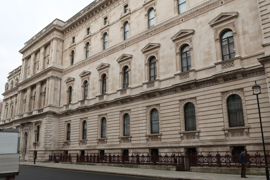
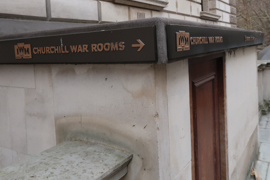

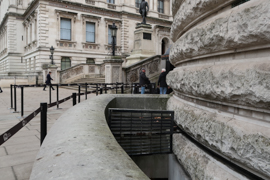
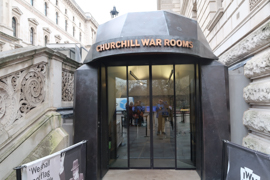
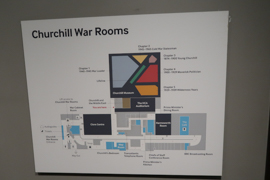
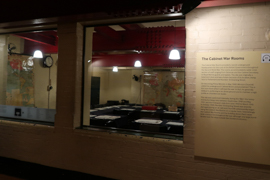
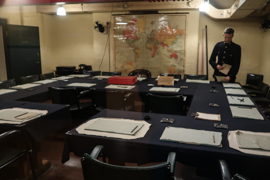
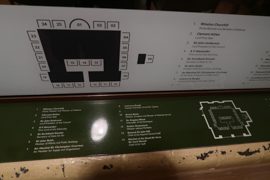
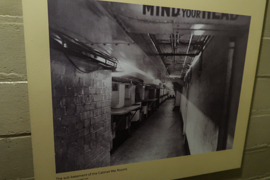
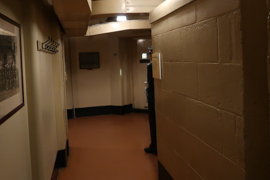
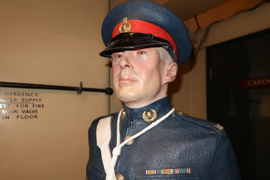

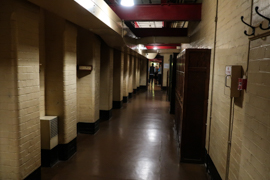
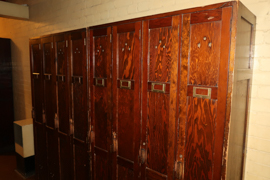
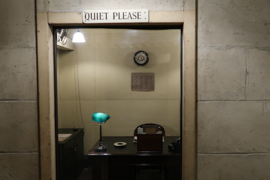
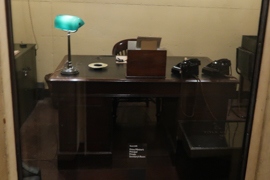
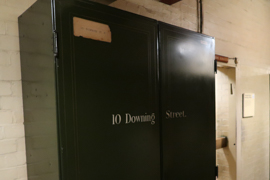
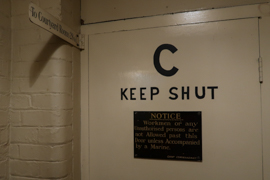
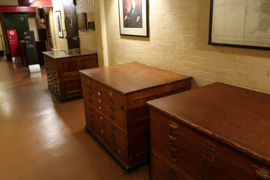
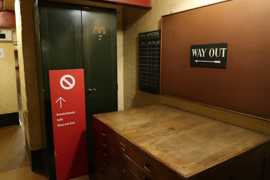
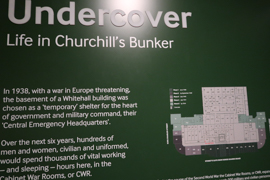


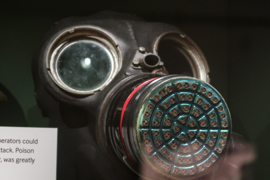
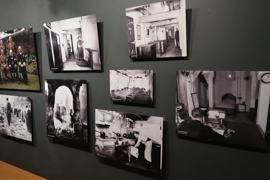
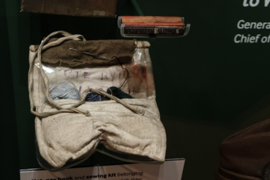
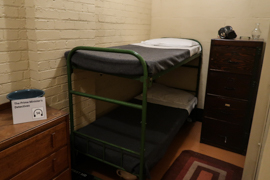
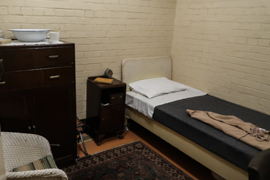
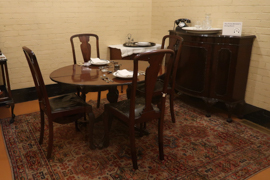
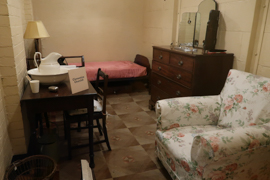
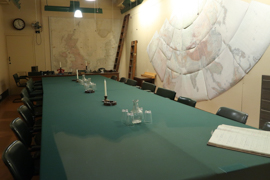
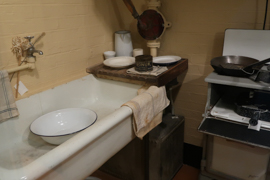
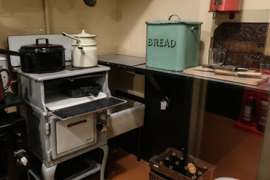
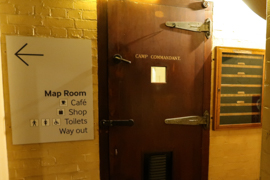
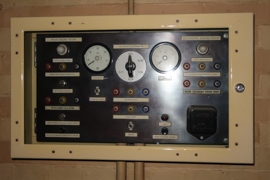
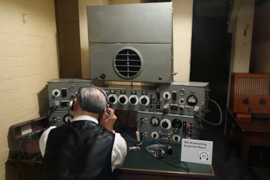
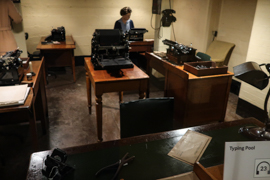
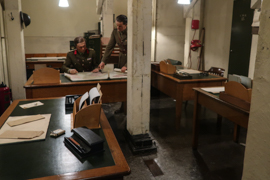
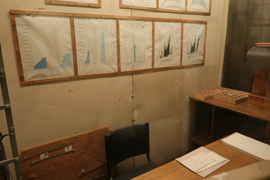
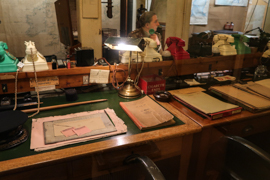
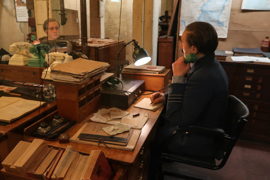
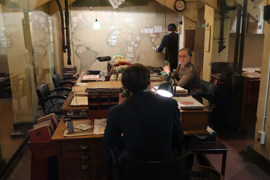


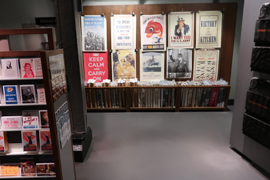
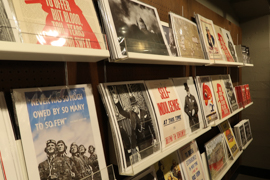
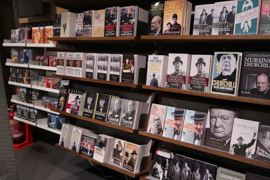
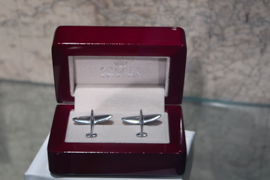
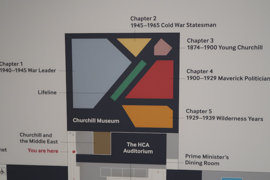
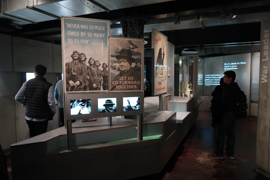
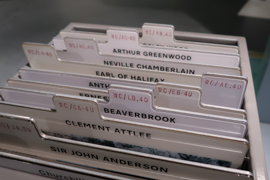
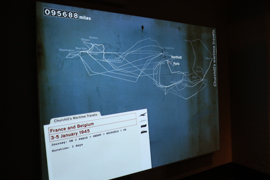
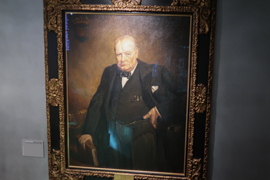
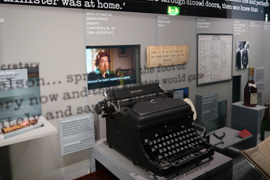
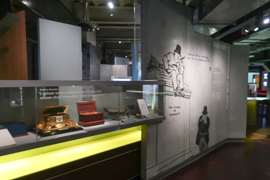
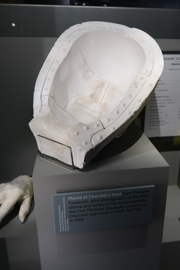
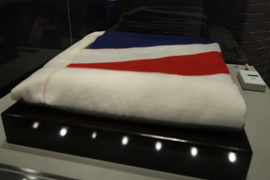
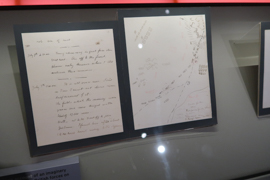
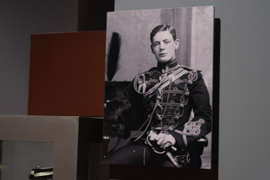

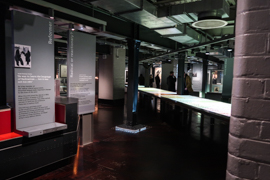
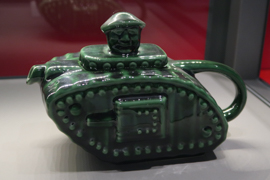

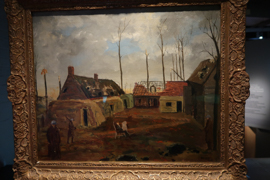
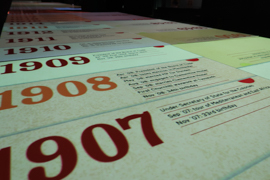

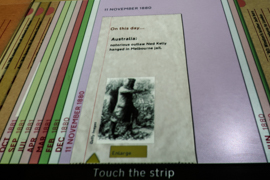
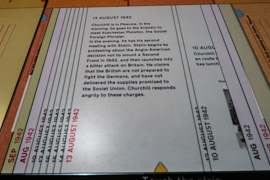
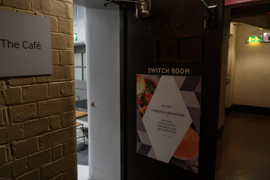
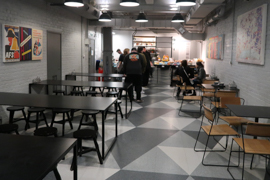















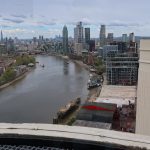





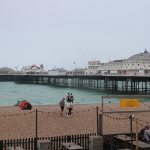



















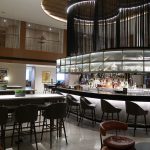



















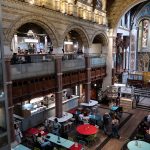



















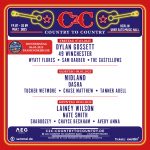





































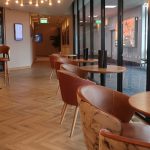




















![Hall of Fame Open 2024 - MD R1: A. Goransson (SWE) / S. Verbeek (NED) - J. Paris (GBR) / R. Ramanathan (IND) 6-3 4-6 1-x [10-8]](https://flyctory.com/wp-content/uploads/2024/07/20240717_HoFOpen_GoransVerbeekParisRaman_BANNER-150x150.jpg)





































































































































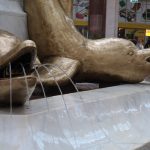






















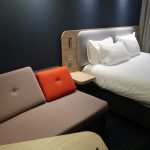




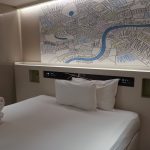






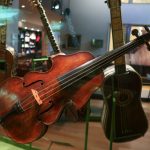














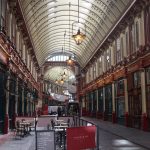






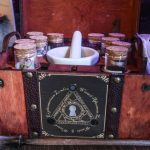









































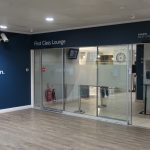


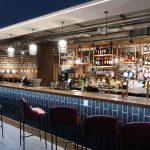


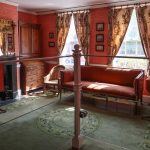




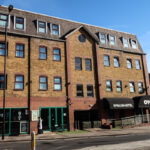



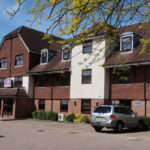

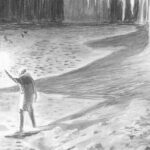











































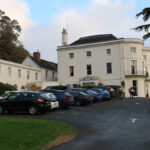































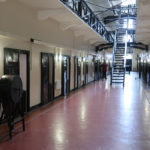




























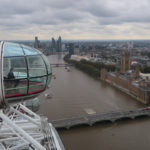




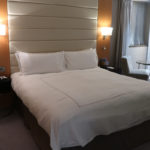



















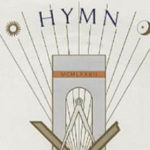



















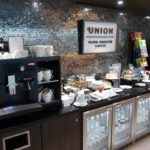

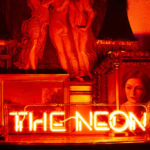

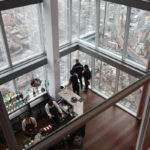



















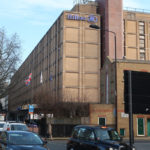

















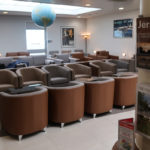

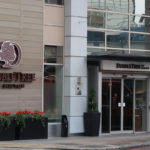







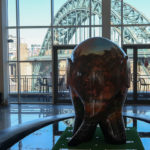

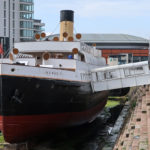




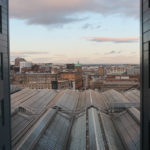
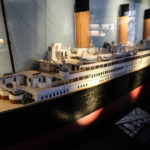







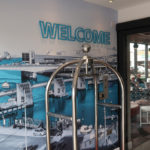

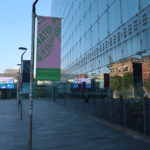



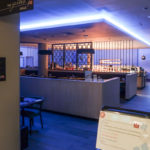






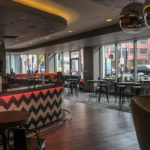











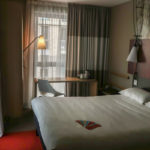

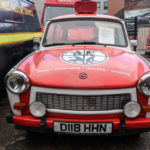







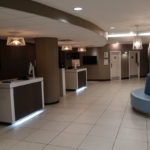




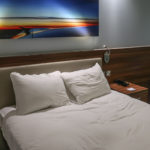









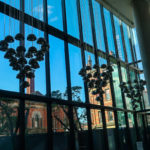










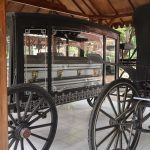
















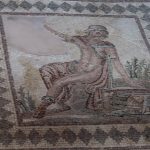






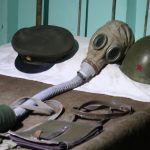










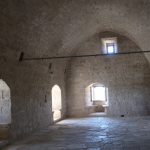

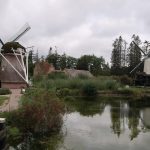

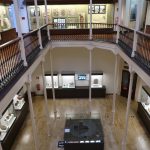






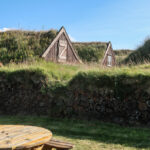



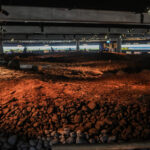
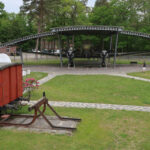


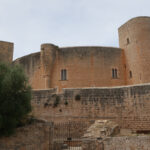


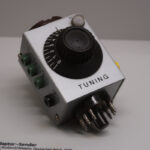
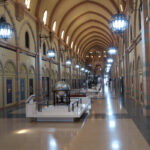
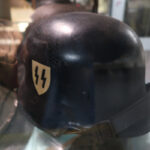


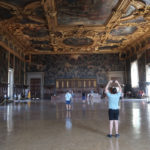
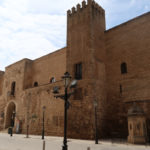
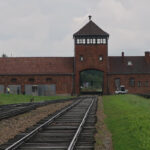














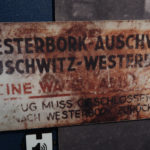







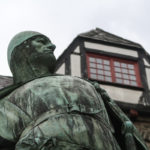

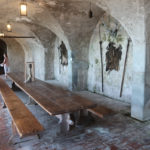



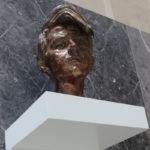
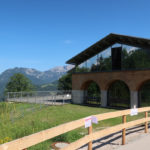


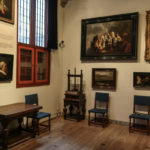





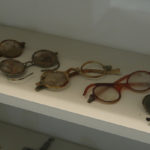

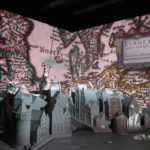



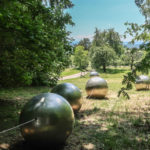
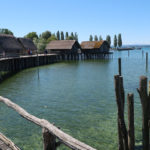



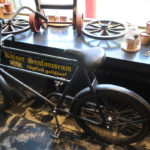

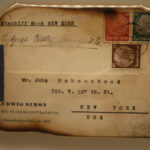


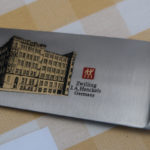
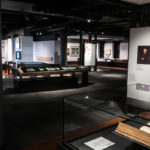

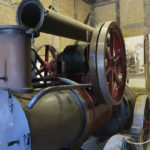




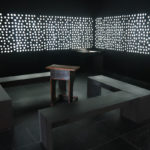



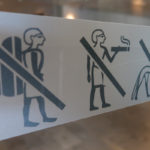
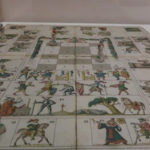
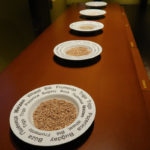




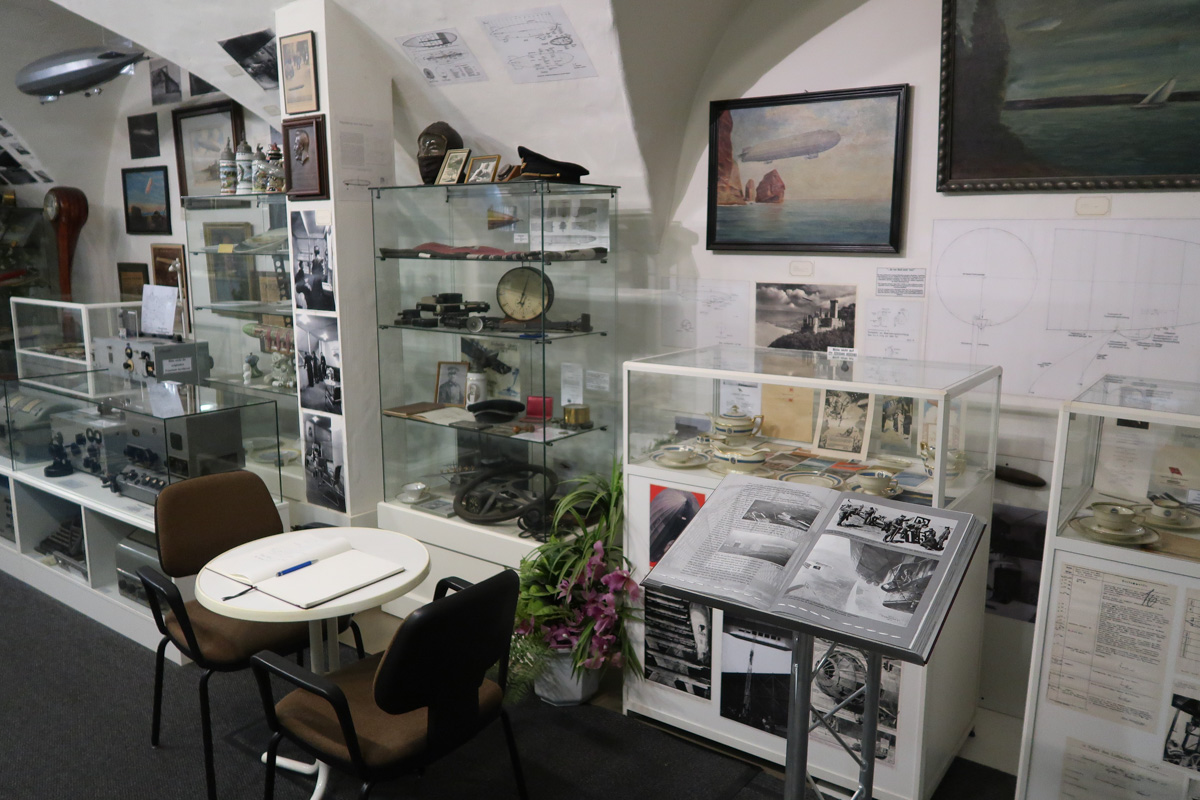
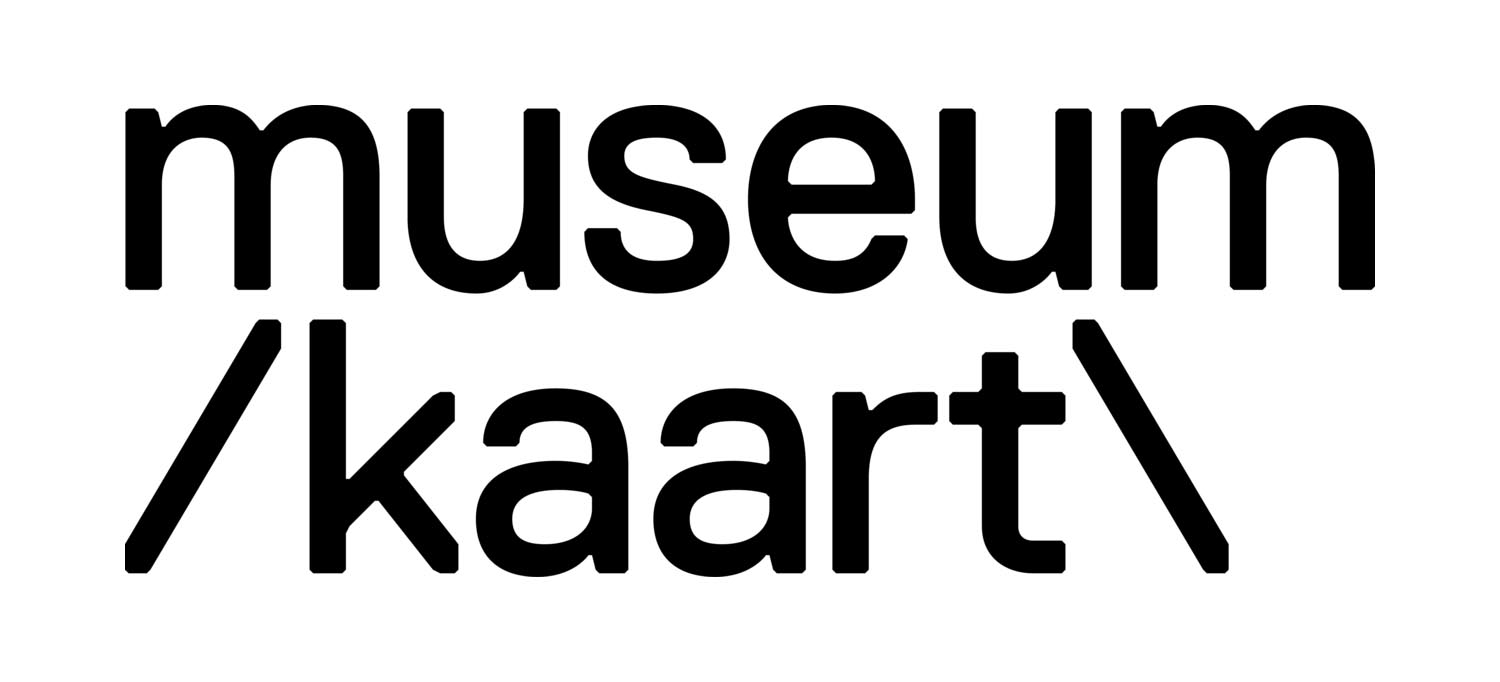
Cool 🙂 I always want to visit this place when I am London and somehow I never find enough time… Next time it will be on the top of my list! 🙂 I would say that Munich agreement allowed Nazis to take some parts of Czechoslovakia, thankfully not the whole thing 😀